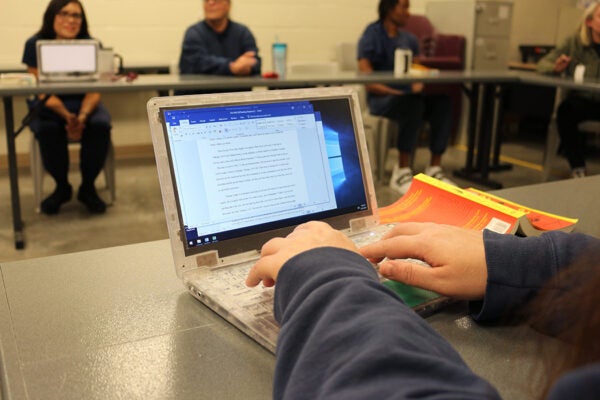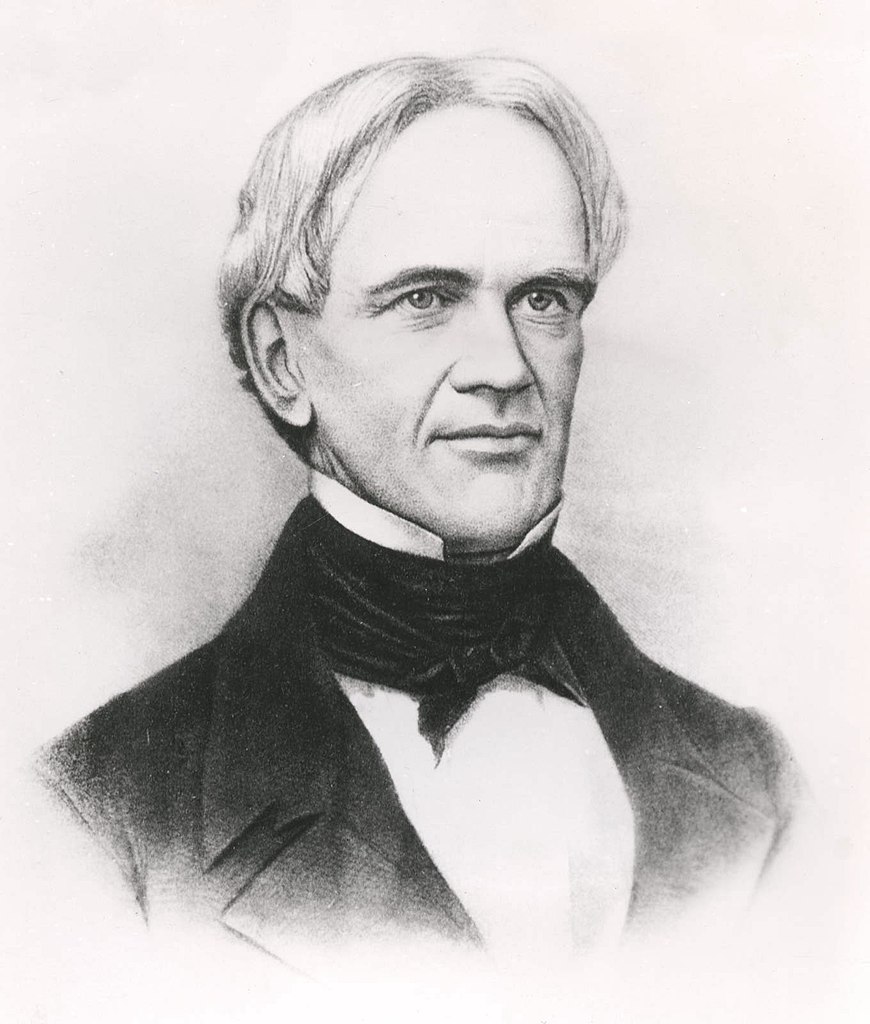

The History of Homework: Why Was it Invented and Who Was Behind It?
- By Emily Summers
- February 14, 2020
Homework is long-standing education staple, one that many students hate with a fiery passion. We can’t really blame them, especially if it’s a primary source of stress that can result in headaches, exhaustion, and lack of sleep.
It’s not uncommon for students, parents, and even some teachers to complain about bringing assignments home. Yet, for millions of children around the world, homework is still a huge part of their daily lives as students — even if it continues to be one of their biggest causes of stress and unrest.
It makes one wonder, who in their right mind would invent such a thing as homework?
Who Invented Homework?
Pliny the younger: when in ancient rome, horace mann: the father of modern homework, the history of homework in america, 1900s: anti-homework sentiment & homework bans, 1930: homework as child labor, early-to-mid 20th century: homework and the progressive era, the cold war: homework starts heating up, 1980s: homework in a nation at risk, early 21 st century, state of homework today: why is it being questioned, should students get homework pros of cons of bringing school work home.

Online, there are many articles that point to Roberto Nevilis as the first educator to give his students homework. He created it as a way to punish his lazy students and ensure that they fully learned their lessons. However, these pieces of information mostly come from obscure educational blogs or forum websites with questionable claims. No credible news source or website has ever mentioned the name Roberto Nevilis as the person who invented homework . In fact, it’s possible that Nevilis never even existed.
As we’re not entirely sure who to credit for creating the bane of students’ existence and the reasons why homework was invented, we can use a few historical trivia to help narrow down our search.
Mentions of the term “homework” date back to as early as ancient Rome. In I century AD, Pliny the Younger , an oratory teacher, supposedly invented homework by asking his followers to practice public speaking at home. It was to help them become more confident and fluent in their speeches. But some would argue that the assignment wasn’t exactly the type of written work that students have to do at home nowadays. Only introverted individuals with a fear of public speaking would find it difficult and stressful.
It’s also safe to argue that since homework is an integral part of education, it’s probable that it has existed since the dawn of learning, like a beacon of light to all those helpless and lost (or to cast darkness on those who despise it). This means that Romans, Enlightenment philosophers, and Middle Age monks all read, memorized, and sang pieces well before homework was given any definition. It’s harder to play the blame game this way unless you want to point your finger at Horace Mann.
In the 19 th century, Horace Mann , a politician and educational reformer had a strong interest in the compulsory public education system of Germany as a newly unified nation-state. Pupils attending the Volksschulen or “People’s Schools” were given mandatory assignments that they needed to complete at home during their own time. This requirement emphasized the state’s power over individuals at a time when nationalists such as Johann Gottlieb Fichte were rallying support for a unified German state. Basically, the state used homework as an element of power play.
Despite its political origins, the system of bringing school assignments home spread across Europe and eventually found their way to Horace Mann, who was in Prussia at that time. He brought the system home with him to America where homework became a daily activity in the lives of students.
Despite homework being a near-universal part of the American educational experience today, it hasn’t always been universally accepted. Take a look at its turbulent history in America.
In 1901, just a few decades after Horace Mann introduced the concept to Americans, homework was banned in the Pacific state of California . The ban affected students younger than 15 years old and stayed in effect until 1917.
Around the same time, prominent publications such as The New York Times and Ladies’ Home Journal published statements from medical professionals and parents who stated that homework was detrimental to children’s health.
In 1930, the American Child Health Association declared homework as a type of child labor . Since laws against child labor had been passed recently during that time, the proclamation painted homework as unacceptable educational practice, making everyone wonder why homework was invented in the first place.
However, it’s keen to note that one of the reasons why homework was so frowned upon was because children were needed to help out with household chores (a.k.a. a less intensive and more socially acceptable form of child labor).
During the progressive education reforms of the late 19 th and early 20 th centuries, educators started looking for ways to make homework assignments more personal and relevant to the interests of individual students. Maybe this was how immortal essay topics such as “What I Want to Be When I Grow Up” and “What I Did During My Summer Vacation” were born.
After World War II, the Cold War heated up rivalries between the U.S. and Russia. Sputnik 1’s launch in 1957 intensified the competition between Americans and Russians – including their youth.
Education authorities in the U.S. decided that implementing rigorous homework to American students of all ages was the best way to ensure that they were always one step ahead of their Russian counterparts, especially in the competitive fields of Math and Science.
In 1986, the U.S. Department of Education’s pamphlet, “What Works,” included homework as one of the effective strategies to boost the quality of education. This came three years after the National Commission on Excellence in Education published “ Nation at Risk: The Imperative for Educational Reform .” The landmark report lambasted the state of America’s schools, calling for reforms to right the alarming direction that public education was headed.
Today, many educators, students, parents, and other concerned citizens have once again started questioning why homework was invented and if it’s still valuable.
Homework now is facing major backlash around the world. With more than 60% of high school and college students seeking counselling for conditions such as clinical depression and anxiety, all of which are brought about by school, it’s safe to say that American students are more stressed out than they should be.
After sitting through hours at school, they leave only to start on a mountain pile of homework. Not only does it take up a large chunk of time that they can otherwise spend on their hobbies and interests, it also stops them from getting enough sleep. This can lead to students experiencing physical health problems, a lack of balance in their lives, and alienation from their peers and society in general.
Is homework important and necessary ? Or is it doing more harm than good? Here some key advantages and disadvantages to consider.
- It encourages the discipline of practice
Using the same formula or memorizing the same information over and over can be difficult and boring, but it reinforces the practice of discipline. To master a skill, repetition is often needed. By completing homework every night, specifically with difficult subjects, the concepts become easier to understand, helping students polish their skills and achieve their life goals.
- It teaches students to manage their time
Homework goes beyond just completing tasks. It encourages children to develop their skills in time management as schedules need to be organized to ensure that all tasks can be completed within the day.
- It provides more time for students to complete their learning process
The time allotted for each subject in school is often limited to 1 hour or less per day. That’s not enough time for students to grasp the material and core concepts of each subject. By creating specific homework assignments, it becomes possible for students to make up for the deficiencies in time.
- It discourages creative endeavors
If a student spends 3-5 hours a day on homework, those are 3-5 hours that they can’t use to pursue creative passions. Students might like to read leisurely or take up new hobbies but homework takes away their time from painting, learning an instrument, or developing new skills.
- Homework is typically geared toward benchmarks
Teachers often assign homework to improve students’ test scores. Although this can result in positive outcomes such as better study habits, the fact is that when students feel tired, they won’t likely absorb as much information. Their stress levels will go up and they’ll feel the curriculum burnout.
- No evidence that homework creates improvements
Research shows that homework doesn’t improve academic performance ; it can even make it worse. Homework creates a negative attitude towards schooling and education, making students dread going to their classes. If they don’t like attending their lessons, they will be unmotivated to listen to the discussions.
With all of the struggles that students face each day due to homework, it’s puzzling to understand why it was even invented. However, whether you think it’s helpful or not, just because the concept has survived for centuries doesn’t mean that it has to stay within the educational system.
Not all students care about the history of homework, but they all do care about the future of their educational pursuits. Maybe one day, homework will be fully removed from the curriculum of schools all over the world but until that day comes, students will have to burn the midnight oil to pass their requirements on time and hopefully achieve their own versions of success.
About the Author
Emily summers.

What is the Difference Between Reverse Osmosis and Ultrafiltration

9 Subjects You Can Study in College

10 Areas of Law That You can Study

What Is Fundraising and How Does It Work

Debunking the Myth of Roberto Nevilis: Who Really Invented Homework?

Is the D Important in Pharmacy? Why Pharm.D or RPh Degrees Shouldn’t Matter

How to Email a Professor: Guide on How to Start and End an Email Conversation

Everything You Need to Know About Getting a Post-Secondary Education

Grammar Corner: What’s The Difference Between Analysis vs Analyses?

The Surprising History of Homework Reform
Really, kids, there was a time when lots of grownups thought homework was bad for you.

Homework causes a lot of fights. Between parents and kids, sure. But also, as education scholar Brian Gill and historian Steven Schlossman write, among U.S. educators. For more than a century, they’ve been debating how, and whether, kids should do schoolwork at home .

At the dawn of the twentieth century, homework meant memorizing lists of facts which could then be recited to the teacher the next day. The rising progressive education movement despised that approach. These educators advocated classrooms free from recitation. Instead, they wanted students to learn by doing. To most, homework had no place in this sort of system.
Through the middle of the century, Gill and Schlossman write, this seemed like common sense to most progressives. And they got their way in many schools—at least at the elementary level. Many districts abolished homework for K–6 classes, and almost all of them eliminated it for students below fourth grade.
By the 1950s, many educators roundly condemned drills, like practicing spelling words and arithmetic problems. In 1963, Helen Heffernan, chief of California’s Bureau of Elementary Education, definitively stated that “No teacher aware of recent theories could advocate such meaningless homework assignments as pages of repetitive computation in arithmetic. Such an assignment not only kills time but kills the child’s creative urge to intellectual activity.”
But, the authors note, not all reformers wanted to eliminate homework entirely. Some educators reconfigured the concept, suggesting supplemental reading or having students do projects based in their own interests. One teacher proposed “homework” consisting of after-school “field trips to the woods, factories, museums, libraries, art galleries.” In 1937, Carleton Washburne, an influential educator who was the superintendent of the Winnetka, Illinois, schools, proposed a homework regimen of “cooking and sewing…meal planning…budgeting, home repairs, interior decorating, and family relationships.”
Another reformer explained that “at first homework had as its purpose one thing—to prepare the next day’s lessons. Its purpose now is to prepare the children for fuller living through a new type of creative and recreational homework.”
That idea didn’t necessarily appeal to all educators. But moderation in the use of traditional homework became the norm.
Weekly Newsletter
Get your fix of JSTOR Daily’s best stories in your inbox each Thursday.
Privacy Policy Contact Us You may unsubscribe at any time by clicking on the provided link on any marketing message.
“Virtually all commentators on homework in the postwar years would have agreed with the sentiment expressed in the NEA Journal in 1952 that ‘it would be absurd to demand homework in the first grade or to denounce it as useless in the eighth grade and in high school,’” Gill and Schlossman write.
That remained more or less true until 1983, when publication of the landmark government report A Nation at Risk helped jump-start a conservative “back to basics” agenda, including an emphasis on drill-style homework. In the decades since, continuing “reforms” like high-stakes testing, the No Child Left Behind Act, and the Common Core standards have kept pressure on schools. Which is why twenty-first-century first graders get spelling words and pages of arithmetic.
Support JSTOR Daily! Join our new membership program on Patreon today.

JSTOR is a digital library for scholars, researchers, and students. JSTOR Daily readers can access the original research behind our articles for free on JSTOR.
Get Our Newsletter
More stories.

- The Coldest Cream

Wooden Kings and Winds of Change in Tonga

The Impact JSTOR in Prison Has Made on Me

Sex (No!), Drugs (No!), and Rock and Roll (Yes!)
Recent posts.
- Swimming Rediscovered, True Crime, and Zealandia
- The Georgia Peach: A Labor History
- Racial Hierarchies: Japanese American Immigrants in California
- Matilda Tone, Historian of Irish Republicanism
Support JSTOR Daily
Sign up for our weekly newsletter.
History Cooperative
The Homework Dilemma: Who Invented Homework?
The inventor of homework may be unknown, but its evolution reflects contributions from educators, philosophers, and students. Homework reinforces learning, fosters discipline, and prepares students for the future, spanning from ancient civilizations to modern education. Ongoing debates probe its balance, efficacy, equity, and accessibility, prompting innovative alternatives like project-based and personalized learning. As education evolves, the enigma of homework endures.
Table of Contents
Who Invented Homework?
While historical records don’t provide a definitive answer regarding the inventor of homework in the modern sense, two prominent figures, Roberto Nevelis of Venice and Horace Mann, are often linked to the concept’s early development.
Roberto Nevelis of Venice: A Mythical Innovator?
Roberto Nevelis, a Venetian educator from the 16th century, is frequently credited with the invention of homework. The story goes that Nevelis assigned tasks to his students outside regular classroom hours to reinforce their learning—a practice that aligns with the essence of homework. However, the historical evidence supporting Nevelis as the inventor of homework is rather elusive, leaving room for skepticism.
While Nevelis’s role remains somewhat mythical, his association with homework highlights the early recognition of the concept’s educational value.
Horace Mann: Shaping the American Educational Landscape
Horace Mann, often regarded as the “Father of American Education,” made significant contributions to the American public school system in the 19th century. Though he may not have single-handedly invented homework, his educational reforms played a crucial role in its widespread adoption.
Mann’s vision for education emphasized discipline and rigor, which included assigning tasks to be completed outside of the classroom. While he did not create homework in the traditional sense, his influence on the American education system paved the way for its integration.
The invention of homework was driven by several educational objectives. It aimed to reinforce classroom learning, ensuring knowledge retention and skill development. Homework also served as a means to promote self-discipline and responsibility among students, fostering valuable study habits and time management skills.
Why Was Homework Invented?
The invention of homework was not a random educational practice but rather a deliberate strategy with several essential objectives in mind.
Reinforcing Classroom Learning
Foremost among these objectives was the need to reinforce classroom learning. When students leave the classroom, the goal is for them to retain and apply the knowledge they have acquired during their lessons. Homework emerged as a powerful tool for achieving this goal. It provided students with a structured platform to revisit the day’s lessons, practice what they had learned, and solidify their understanding.
Homework assignments often mirrored classroom activities, allowing students to extend their learning beyond the confines of school hours. Through the repetition of exercises and tasks related to the curriculum, students could deepen their comprehension and mastery of various subjects.
Fostering Self-Discipline and Responsibility
Another significant objective behind the creation of homework was the promotion of self-discipline and responsibility among students. Education has always been about more than just the acquisition of knowledge; it also involves the development of life skills and habits that prepare individuals for future challenges.
By assigning tasks to be completed independently at home, educators aimed to instill valuable study habits and time management skills. Students were expected to take ownership of their learning, manage their time effectively, and meet deadlines—a set of skills that have enduring relevance in contemporary education and beyond.
Homework encouraged students to become proactive in their educational journey. It taught them the importance of accountability and the satisfaction of completing tasks on their own. These life skills would prove invaluable in their future endeavors, both academically and in the broader context of their lives.
When Was Homework Invented?
The roots of homework stretch deep into the annals of history, tracing its origins to ancient civilizations and early educational practices. While it has undergone significant evolution over the centuries, the concept of extending learning beyond the classroom has always been an integral part of education.
Earliest Origins of Homework and Early Educational Practices
The idea of homework, in its most rudimentary form, can be traced back to the earliest human civilizations. In ancient Egypt , for instance, students were tasked with hieroglyphic writing exercises. These exercises served as a precursor to modern homework, as they required students to practice and reinforce their understanding of written language—an essential skill for communication and record-keeping in that era.
In ancient Greece , luminaries like Plato and Aristotle advocated for the use of written exercises as a tool for intellectual development. They recognized the value of practice in enhancing one’s knowledge and skills, laying the foundation for a more systematic approach to homework.
The ancient Romans also played a pivotal role in the early development of homework. Young Roman students were expected to complete assignments at home, with a particular focus on subjects like mathematics and literature. These assignments were designed to consolidate their classroom learning, emphasizing the importance of practice in mastering various disciplines.
READ MORE: Who Invented Math? The History of Mathematics
The practice of assigning work to be done outside of regular school hours continued to evolve through various historical periods. As societies advanced, so did the complexity and diversity of homework tasks, reflecting the changing needs and priorities of education.
The Influence of Educational Philosophers
While the roots of homework extend to ancient times, the ideas of renowned educational philosophers in later centuries further contributed to its development. John Locke, an influential thinker of the Enlightenment era, believed in a gradual and cumulative approach to learning. He emphasized the importance of students revisiting topics through repetition and practice, a concept that aligns with the principles of homework.
Jean-Jacques Rousseau, another prominent philosopher, stressed the significance of self-directed learning. Rousseau’s ideas encouraged the development of independent study habits and a personalized approach to education—a philosophy that resonates with modern concepts of homework.
Homework in the American Public School System
The American public school system has played a pivotal role in the widespread adoption and popularization of homework. To understand the significance of homework in modern education, it’s essential to delve into its history and evolution within the United States.
History and Evolution of Homework in the United States
The late 19th century marked a significant turning point for homework in the United States. During this period, influenced by educational reforms and the growing need for standardized curricula, homework assignments began to gain prominence in American schools.
Educational reformers and policymakers recognized the value of homework as a tool for reinforcing classroom learning. They believed that assigning tasks for students to complete outside of regular school hours would help ensure that knowledge was retained and skills were honed. This approach aligned with the broader trends in education at the time, which aimed to provide a more structured and systematic approach to learning.
As the American public school system continued to evolve, homework assignments became a common practice in classrooms across the nation. The standardization of curricula and the formalization of education contributed to the integration of homework into the learning process. This marked a significant departure from earlier educational practices, reflecting a shift toward more structured and comprehensive learning experiences.
The incorporation of homework into the American education system not only reinforced classroom learning but also fostered self-discipline and responsibility among students. It encouraged them to take ownership of their educational journey and develop valuable study habits and time management skills—a legacy that continues to influence modern pedagogy.
Controversies Around Homework
Despite its longstanding presence in education, homework has not been immune to controversy and debate. While many view it as a valuable educational tool, others question its effectiveness and impact on students’ well-being.
The Homework Debate
One of the central controversies revolves around the amount of homework assigned to students. Critics argue that excessive homework loads can lead to stress, sleep deprivation, and a lack of free time for students. The debate often centers on striking the right balance between homework and other aspects of a student’s life, including extracurricular activities, family time, and rest.
Homework’s Efficacy
Another contentious issue pertains to the efficacy of homework in enhancing learning outcomes. Some studies suggest that moderate amounts of homework can reinforce classroom learning and improve academic performance. However, others question whether all homework assignments contribute equally to learning or whether some may be more beneficial than others. The effectiveness of homework can vary depending on factors such as the student’s grade level, the subject matter, and the quality of the assignment.
Equity and Accessibility
Homework can also raise concerns related to equity and accessibility. Students from disadvantaged backgrounds may have limited access to resources and support at home, potentially putting them at a disadvantage when it comes to completing homework assignments. This disparity has prompted discussions about the role of homework in perpetuating educational inequalities and how schools can address these disparities.
Alternative Approaches to Learning
In response to the controversies surrounding homework, educators and researchers have explored alternative approaches to learning. These approaches aim to strike a balance between reinforcing classroom learning and promoting holistic student well-being. Some alternatives include:
Project-Based Learning
Project-based learning emphasizes hands-on, collaborative projects that allow students to apply their knowledge to real-world problems. This approach shifts the focus from traditional homework assignments to engaging, practical learning experiences.
Flipped Classrooms
Flipped classrooms reverse the traditional teaching model. Students learn new material at home through video lectures or readings and then use class time for interactive discussions and activities. This approach reduces the need for traditional homework while promoting active learning.
Personalized Learning
Personalized learning tailors instruction to individual students’ needs, allowing them to progress at their own pace. This approach minimizes the need for one-size-fits-all homework assignments and instead focuses on targeted learning experiences.
The Ongoing Conversation
The controversies surrounding homework highlight the need for an ongoing conversation about its role in education. Striking the right balance between reinforcing learning and addressing students’ well-being remains a complex challenge. As educators, parents, and researchers continue to explore innovative approaches to learning, the role of homework in the modern educational landscape continues to evolve. Ultimately, the goal is to provide students with the most effective and equitable learning experiences possible.
Unpacking the Homework Enigma
Homework, without a single inventor, has evolved through educators, philosophers, and students. It reinforces learning, fosters discipline and prepares students. From ancient times to modern education, it upholds timeless values. Yet, controversies arise—debates on balance, efficacy, equity, and accessibility persist. Innovative alternatives like project-based and personalized learning emerge. Homework’s role evolves with education.
How to Cite this Article
There are three different ways you can cite this article.
1. To cite this article in an academic-style article or paper , use:
<a href=" https://historycooperative.org/who-invented-homework/ ">The Homework Dilemma: Who Invented Homework?</a>
Leave a Comment Cancel reply

Who Invented Homework? A Big Question Answered with Facts

Crystal Bourque

Delving into the intriguing history of education, one of the most pondered questions arises: Who invented homework?
Love it or hate it, homework is part of student life.
But what’s the purpose of completing these tasks and assignments? And who would create an education system that makes students complete work outside the classroom?
This post contains everything you’ve ever wanted to know about homework. So keep reading! You’ll discover the answer to the big question: who invented homework?
Who Invented Homework?
The myth of roberto nevilis: who is he, the origins of homework, a history of homework in the united states, 5 facts about homework, types of homework.
- What’s the Purpose of Homework?
- Homework Pros
- Homework Cons
When, How, and Why was Homework Invented?

Daniel Jedzura/Shutterstock.com
To ensure we cover the basics (and more), let’s explore when, how, and why was homework invented.
As a bonus, we’ll also cover who invented homework. So get ready because the answer might surprise you!
It’s challenging to pinpoint the exact person responsible for the invention of homework.
For example, Medieval Monks would work on memorization and practice singing. Ancient philosophers would read and develop their teachings outside the classroom. While this might not sound like homework in the traditional form we know today, one could argue that these methods helped to form the basic structure and format.
So let’s turn to recorded history to try and identify who invented homework and when homework was invented.
Pliny the Younger

Credit: laphamsquarterly.org
Mention of homework appears in the writings of Pliny the Younger, meaning we can trace the term ‘homework’ back to ancient Rome. Pliny the Younger (61—112 CE) was an oratory teacher, and often told his students to practice their public speaking outside class.
Pliny believed that the repetition and practice of speech would help students gain confidence in their speaking abilities.
Johann Gottlieb Fichte

Credit: inlibris.com
Before the idea of homework came to the United States, Germany’s newly formed nation-state had been giving students homework for years.
The roots of homework extend to ancient times, but it wasn’t until German Philosopher Johann Gottlieb Fichte (1762—1814) helped to develop the Volksschulen (People’s Schools) that homework became mandatory.
Fichte believed that the state needed to hold power over individuals to create a unified Germany. A way to assert control over people meant that students attending the Volksshulen were required to complete assignments at home on their own time.
As a result, some people credit Fichte for being the inventor of homework.
Horace Mann

Credit: commons.wikimedia.org
The idea of homework spread across Europe throughout the 19th century.
So who created homework in the United States?
The history of education and homework now moves to Horace Mann (1796—1859), an American educational reformer, spent some time in Prussia. There, he learned more about Germany’s Volksshulen, forms of education , and homework practices.
Mann liked what he saw and brought this system back to America. As a result, homework rapidly became a common factor in students’ lives across the country.

Credit: medium.com
If you’ve ever felt curious about who invented homework, a quick online search might direct you to a man named Roberto Nevilis, a teacher in Venice, Italy.
As the story goes, Nevilis invented homework in 1905 (or 1095) to punish students who didn’t demonstrate a good understanding of the lessons taught during class.
This teaching technique supposedly spread to the rest of Europe before reaching North America.
Unfortunately, there’s little truth to this story. If you dig a little deeper, you’ll find that these online sources lack credible sources to back up this myth as fact.
In 1905, the Roman Empire turned its attention to the First Crusade. No one had time to spare on formalizing education, and classrooms didn’t even exist. So how could Nevilis spread the idea of homework when education remained so informal?
And when you jump to 1901, you’ll discover that the government of California passed a law banning homework for children under fifteen. Nevilis couldn’t have invented homework in 1905 if this law had already reached the United States in 1901.

Inside Creative House/Shutterstock.com
When it comes to the origins of homework, looking at the past shows us that there isn’t one person who created homework. Instead, examining the facts shows us that several people helped to bring the idea of homework into Europe and then the United States.
In addition, the idea of homework extends beyond what historians have discovered. After all, the concept of learning the necessary skills human beings need to survive has existed since the dawn of man.
More than 100 years have come and gone since Horace Mann introduced homework to the school system in the United States.
Therefore, it’s not strange to think that the concept of homework has changed, along with our people and culture.
In short, homework hasn’t always been considered acceptable. Let’s dive into the history or background of homework to learn why.
Homework is Banned! (The 1900s)
Important publications of the time, including the Ladies’ Home Journal and The New York Times, published articles on the negative impacts homework had on American children’s health and well-being.
As a result, California banned homework for children under fifteen in 1901. This law, however, changed again about a decade later (1917).
Children Needed at Home (The 1930s)
Formed in 1923, The American Child Health Association (ACHA) aimed to decrease the infant mortality rate and better support the health and development of the American child.
By the 1930s, ACHA deemed homework a form of child labor. Since the government recently passed laws against child labor , it became difficult to justify homework assignments. College students, however, could still receive homework tasks as part of their formal schooling.

Studio Romantic/Shutterstock.com
A Shift in Ideas (The 1940s—1950s)
During the early to mid-1900s, the United States entered the Progressive Era. As a result, the country reformed its public education system to help improve students’ learning.
Homework became a part of everyday life again. However, this time, the reformed curriculum required teachers to make the assignments more personal.
As a result, American students would write essays on summer vacations and winter breaks, participate in ‘show and tell,’ and more.
These types of assignments still exist today!
Homework Today (The 2000s)
The focus of American education shifted again when the US Department of Education was founded in 1979, aiming to uplevel education in the country by, among other things, prohibiting discrimination ensuring equal access, and highlighting important educational issues.
In 2022, the controversial nature of homework in public schools and formal education is once again a hot topic of discussion in many classrooms.
According to one study , more than 60% of college and high school students deal with mental health issues like depression and anxiety due to homework. In addition, the large number of assignments given to students takes away the time students spend on other interests and hobbies. Homework also negatively impacts sleep.
As a result, some schools have implemented a ban or limit on the amount of homework assigned to students.
Test your knowledge and check out these other facts about homework:
- Horace Mann is also known as the ‘father’ of the modern school system and the educational process that we know today (read more about Who Invented School ).
- With a bit of practice, homework can improve oratory and writing skills. Both are important in a student’s life at all stages.
- Homework can replace studying. Completing regular assignments reduces the time needed to prepare for tests.
- Homework is here to stay. It doesn’t look like teachers will stop assigning homework any time soon. However, the type and quantity of homework given seem to be shifting to accommodate the modern student’s needs.
- The optimal length of time students should spend on homework is one to two hours. Students who spent one to two hours on homework per day scored higher test results.
- So, while completing assignments outside of school hours may be beneficial, spending, for example, a day on homework is not ideal.
Explore how the Findmykids app can complement your child’s school routine. With features designed to ensure their safety and provide peace of mind, it’s a valuable tool for parents looking to stay connected with their children throughout the day. Download now and stay informed about your child’s whereabouts during their academic journey.

Ground Picture/Shutterstock.com
The U.S. Department of Education provides teachers with plenty of information and resources to help students with homework.
In general, teachers give students homework that requires them to employ four strategies. The four types of homework types include:
- Practice: To help students master a specific skill, teachers will assign homework that requires them to repeat the particular skill. For example, students must solve a series of math problems.
- Preparation: This type of homework introduces students to the material they will learn in the future. An example of preparatory homework is assigning students a chapter to read before discussing the contents in class the next day.
- Extension: When a teacher wants to get students to apply what they’ve learned but create a challenge, this type of homework is assigned. It helps to boost problem-solving skills. For example, using a textbook to find the answer to a question gets students to problem-solve differently.
- Integration: To solidify the student learning experience , teachers will create a task that requires the use of many different skills. An example of integration is a book report. Completing integration homework assignments helps students learn how to be organized, plan, strategize, and solve problems on their own. Encouraging effective study habits is a key idea behind homework, too.
Ultimately, the type of homework students receive should have a purpose, be focused and clear, and challenge students to problem solve while integrating lessons learned.
What’s the Purpose of Homework?

LightField Studios/Shutterstock.com
Homework aims to ensure individual students understand the information they learn in class. It also helps teachers to assess a student’s progress and identify strengths and weaknesses.
For example, school teachers use different types of homework like book reports, essays, math problems, and more to help students demonstrate their understanding of the lessons learned.
Does Homework Improve the Quality of Education?
Homework is a controversial topic today. Educators, parents, and even students often question whether homework is beneficial in improving the quality of education.
Let’s explore the pros and cons of homework to try and determine whether homework improves the quality of education in schools.
Homework Pros:
- Time Management Skills : Assigning homework with a due date helps students to develop a schedule to ensure they complete tasks on time. Personal responsibility amongst students is thereby promoted.
- More Time to Learn : Students encounter plenty of distractions at school. It’s also challenging for students to grasp the material in an hour or less. Assigning homework provides the student with the opportunity to understand the material.
- Improves Research Skills : Some homework assignments require students to seek out information. Through homework, students learn where to seek out good, reliable sources.
Homework Cons:
- Reduced Physical Activity : Homework requires students to sit at a desk for long periods. Lack of movement decreases the amount of physical activity, often because teachers assign students so much homework that they don’t have time for anything else. Time for students can get almost totally taken up with out-of-school assignments.
- Stuck on an Assignment: A student often gets stuck on an assignment. Whether they can’t find information or the correct solution, students often don’t have help from parents and require further support from a teacher. For underperforming students, especially, this can have a negative impact on their confidence and overall educational experience.
- Increases Stress : One of the results of getting stuck on an assignment is that it increases stress and anxiety. Too much homework hurts a child’s mental health, preventing them from learning and understanding the material.
Some research shows that homework doesn’t provide educational benefits or improve performance, and can lead to a decline in physical activities. These studies counter that the potential effectiveness of homework is undermined by its negative impact on students.
However, research also shows that homework benefits students—provided teachers don’t give them too much. Here’s a video from Duke Today that highlights a study on the very topic.
Homework Today
The question of “Who Invented Homework?” delves into the historical evolution of academic practices, shedding light on its significance in fostering responsibility among students and contributing to academic progress. While supported by education experts, homework’s role as a pivotal aspect of academic life remains a subject of debate, often criticized as a significant source of stress. Nonetheless, when balanced with extracurricular activities and integrated seamlessly into the learning process, homework continues to shape and refine students’ educational journeys.
Maybe one day, students won’t need to submit assignments or complete tasks at home. But until then, many students understand the benefits of completing homework as it helps them further their education and achieve future career goals.
Before you go, here’s one more question: how do you feel about homework? Do you think teachers assign too little or too much? Get involved and start a discussion in the comments!

Elena Kharichkina/Shutterstock.com
Who invented homework and why?
The creation of homework can be traced back to the Ancient Roman Pliny the Younger, a teacher of oratory—he is generally credited as being the father of homework! Pliny the Younger asked his students to practice outside of class to help them build confidence in their speaking skills.
Who invented homework as a punishment?
There’s a myth that the Italian educator Roberto Nevilis first used homework as a means of punishing his students in the early 20th century—although this has now been widely discredited, and the story of the Italian teacher is regarded as a myth.

Why did homework stop being a punishment?
There are several reasons that homework ceased being a form of punishment. For example, the introduction of child labor laws in the early twentieth century meant that the California education department banned giving homework to children under the age of fifteen for a time. Further, throughout the 1940s and 1950s, there was a growing emphasis on enhancing students’ learning, making homework assignments more personal, and nurturing growth, rather than being used as a form of punishment.
The picture on the front page: Evgeny Atamanenko/Shutterstock.com

Many children wait for the Day of Knowledge with excitement and anxiety. This is especially…

The school year is now starting again and with that, the Internet is blowing up…

Imagine that you have gotten yourself into a difficult situation or unfamiliar or dangerous circumstances….
Subscribe now!
Glad you've joined us🎉🎉.

In order to continue enjoying our site, we ask that you confirm your identity as a human. Thank you very much for your cooperation.
Homework in America
- 2014 Brown Center Report on American Education
Subscribe to the Brown Center on Education Policy Newsletter
Tom loveless tom loveless former brookings expert @tomloveless99.
March 18, 2014
- 18 min read
Part II of the 2014 Brown Center Report on American Education

Homework! The topic, no, just the word itself, sparks controversy. It has for a long time. In 1900, Edward Bok, editor of the Ladies Home Journal , published an impassioned article, “A National Crime at the Feet of Parents,” accusing homework of destroying American youth. Drawing on the theories of his fellow educational progressive, psychologist G. Stanley Hall (who has since been largely discredited), Bok argued that study at home interfered with children’s natural inclination towards play and free movement, threatened children’s physical and mental health, and usurped the right of parents to decide activities in the home.
The Journal was an influential magazine, especially with parents. An anti-homework campaign burst forth that grew into a national crusade. [i] School districts across the land passed restrictions on homework, culminating in a 1901 statewide prohibition of homework in California for any student under the age of 15. The crusade would remain powerful through 1913, before a world war and other concerns bumped it from the spotlight. Nevertheless, anti-homework sentiment would remain a touchstone of progressive education throughout the twentieth century. As a political force, it would lie dormant for years before bubbling up to mobilize proponents of free play and “the whole child.” Advocates would, if educators did not comply, seek to impose homework restrictions through policy making.
Our own century dawned during a surge of anti-homework sentiment. From 1998 to 2003, Newsweek , TIME , and People , all major national publications at the time, ran cover stories on the evils of homework. TIME ’s 1999 story had the most provocative title, “The Homework Ate My Family: Kids Are Dazed, Parents Are Stressed, Why Piling On Is Hurting Students.” People ’s 2003 article offered a call to arms: “Overbooked: Four Hours of Homework for a Third Grader? Exhausted Kids (and Parents) Fight Back.” Feature stories about students laboring under an onerous homework burden ran in newspapers from coast to coast. Photos of angst ridden children became a journalistic staple.
The 2003 Brown Center Report on American Education included a study investigating the homework controversy. Examining the most reliable empirical evidence at the time, the study concluded that the dramatic claims about homework were unfounded. An overwhelming majority of students, at least two-thirds, depending on age, had an hour or less of homework each night. Surprisingly, even the homework burden of college-bound high school seniors was discovered to be rather light, less than an hour per night or six hours per week. Public opinion polls also contradicted the prevailing story. Parents were not up in arms about homework. Most said their children’s homework load was about right. Parents wanting more homework out-numbered those who wanted less.
Now homework is in the news again. Several popular anti-homework books fill store shelves (whether virtual or brick and mortar). [ii] The documentary Race to Nowhere depicts homework as one aspect of an overwrought, pressure-cooker school system that constantly pushes students to perform and destroys their love of learning. The film’s website claims over 6,000 screenings in more than 30 countries. In 2011, the New York Times ran a front page article about the homework restrictions adopted by schools in Galloway, NJ, describing “a wave of districts across the nation trying to remake homework amid concerns that high stakes testing and competition for college have fueled a nightly grind that is stressing out children and depriving them of play and rest, yet doing little to raise achievement, especially in elementary grades.” In the article, Vicki Abeles, the director of Race to Nowhere , invokes the indictment of homework lodged a century ago, declaring, “The presence of homework is negatively affecting the health of our young people and the quality of family time.” [iii]
A petition for the National PTA to adopt “healthy homework guidelines” on change.org currently has 19,000 signatures. In September 2013, Atlantic featured an article, “My Daughter’s Homework is Killing Me,” by a Manhattan writer who joined his middle school daughter in doing her homework for a week. Most nights the homework took more than three hours to complete.
The Current Study
A decade has passed since the last Brown Center Report study of homework, and it’s time for an update. How much homework do American students have today? Has the homework burden increased, gone down, or remained about the same? What do parents think about the homework load?
A word on why such a study is important. It’s not because the popular press is creating a fiction. The press accounts are built on the testimony of real students and real parents, people who are very unhappy with the amount of homework coming home from school. These unhappy people are real—but they also may be atypical. Their experiences, as dramatic as they are, may not represent the common experience of American households with school-age children. In the analysis below, data are analyzed from surveys that are methodologically designed to produce reliable information about the experiences of all Americans. Some of the surveys have existed long enough to illustrate meaningful trends. The question is whether strong empirical evidence confirms the anecdotes about overworked kids and outraged parents.
Data from the National Assessment of Educational Progress (NAEP) provide a good look at trends in homework for nearly the past three decades. Table 2-1 displays NAEP data from 1984-2012. The data are from the long-term trend NAEP assessment’s student questionnaire, a survey of homework practices featuring both consistently-worded questions and stable response categories. The question asks: “How much time did you spend on homework yesterday?” Responses are shown for NAEP’s three age groups: 9, 13, and 17. [iv]

Today’s youngest students seem to have more homework than in the past. The first three rows of data for age 9 reveal a shift away from students having no homework, declining from 35% in 1984 to 22% in 2012. A slight uptick occurred from the low of 18% in 2008, however, so the trend may be abating. The decline of the “no homework” group is matched by growth in the percentage of students with less than an hour’s worth, from 41% in 1984 to 57% in 2012. The share of students with one to two hours of homework changed very little over the entire 28 years, comprising 12% of students in 2012. The group with the heaviest load, more than two hours of homework, registered at 5% in 2012. It was 6% in 1984.
The amount of homework for 13-year-olds appears to have lightened slightly. Students with one to two hours of homework declined from 29% to 23%. The next category down (in terms of homework load), students with less than an hour, increased from 36% to 44%. One can see, by combining the bottom two rows, that students with an hour or more of homework declined steadily from 1984 to 2008 (falling from 38% to 27%) and then ticked up to 30% in 2012. The proportion of students with the heaviest load, more than two hours, slipped from 9% in 1984 to 7% in 2012 and ranged between 7-10% for the entire period.
For 17-year-olds, the homework burden has not varied much. The percentage of students with no homework has increased from 22% to 27%. Most of that gain occurred in the 1990s. Also note that the percentage of 17-year-olds who had homework but did not do it was 11% in 2012, the highest for the three NAEP age groups. Adding that number in with the students who didn’t have homework in the first place means that more than one-third of seventeen year olds (38%) did no homework on the night in question in 2012. That compares with 33% in 1984. The segment of the 17-year-old population with more than two hours of homework, from which legitimate complaints of being overworked might arise, has been stuck in the 10%-13% range.
The NAEP data point to four main conclusions:
- With one exception, the homework load has remained remarkably stable since 1984.
- The exception is nine-year-olds. They have experienced an increase in homework, primarily because many students who once did not have any now have some. The percentage of nine-year-olds with no homework fell by 13 percentage points, and the percentage with less than an hour grew by 16 percentage points.
- Of the three age groups, 17-year-olds have the most bifurcated distribution of the homework burden. They have the largest percentage of kids with no homework (especially when the homework shirkers are added in) and the largest percentage with more than two hours.
- NAEP data do not support the idea that a large and growing number of students have an onerous amount of homework. For all three age groups, only a small percentage of students report more than two hours of homework. For 1984-2012, the size of the two hours or more groups ranged from 5-6% for age 9, 6-10% for age 13, and 10-13% for age 17.
Note that the item asks students how much time they spent on homework “yesterday.” That phrasing has the benefit of immediacy, asking for an estimate of precise, recent behavior rather than an estimate of general behavior for an extended, unspecified period. But misleading responses could be generated if teachers lighten the homework of NAEP participants on the night before the NAEP test is given. That’s possible. [v] Such skewing would not affect trends if it stayed about the same over time and in the same direction (teachers assigning less homework than usual on the day before NAEP). Put another way, it would affect estimates of the amount of homework at any single point in time but not changes in the amount of homework between two points in time.
A check for possible skewing is to compare the responses above with those to another homework question on the NAEP questionnaire from 1986-2004 but no longer in use. [vi] It asked students, “How much time do you usually spend on homework each day?” Most of the response categories have different boundaries from the “last night” question, making the data incomparable. But the categories asking about no homework are comparable. Responses indicating no homework on the “usual” question in 2004 were: 2% for age 9-year-olds, 5% for 13 year olds, and 12% for 17-year-olds. These figures are much less than the ones reported in Table 2-1 above. The “yesterday” data appear to overstate the proportion of students typically receiving no homework.
The story is different for the “heavy homework load” response categories. The “usual” question reported similar percentages as the “yesterday” question. The categories representing the most amount of homework were “more than one hour” for age 9 and “more than two hours” for ages 13 and 17. In 2004, 12% of 9-year-olds said they had more than one hour of daily homework, while 8% of 13-year-olds and 12% of 17-year-olds said they had more than two hours. For all three age groups, those figures declined from1986 to 2004. The decline for age 17 was quite large, falling from 17% in 1986 to 12% in 2004.
The bottom line: regardless of how the question is posed, NAEP data do not support the view that the homework burden is growing, nor do they support the belief that the proportion of students with a lot of homework has increased in recent years. The proportion of students with no homework is probably under-reported on the long-term trend NAEP. But the upper bound of students with more than two hours of daily homework appears to be about 15%–and that is for students in their final years of high school.
College Freshmen Look Back
There is another good source of information on high school students’ homework over several decades. The Higher Education Research Institute at UCLA conducts an annual survey of college freshmen that began in 1966. In 1986, the survey started asking a series of questions regarding how students spent time in the final year of high school. Figure 2-1 shows the 2012 percentages for the dominant activities. More than half of college freshmen say they spent at least six hours per week socializing with friends (66.2%) and exercising/sports (53.0%). About 40% devoted that much weekly time to paid employment.

Homework comes in fourth pace. Only 38.4% of students said they spent at least six hours per week studying or doing homework. When these students were high school seniors, it was not an activity central to their out of school lives. That is quite surprising. Think about it. The survey is confined to the nation’s best students, those attending college. Gone are high school dropouts. Also not included are students who go into the military or attain full time employment immediately after high school. And yet only a little more than one-third of the sampled students, devoted more than six hours per week to homework and studying when they were on the verge of attending college.
Another notable finding from the UCLA survey is how the statistic is trending (see Figure 2-2). In 1986, 49.5% reported spending six or more hours per week studying and doing homework. By 2002, the proportion had dropped to 33.4%. In 2012, as noted in Figure 2-1, the statistic had bounced off the historical lows to reach 38.4%. It is slowly rising but still sits sharply below where it was in 1987.

What Do Parents Think?
Met Life has published an annual survey of teachers since 1984. In 1987 and 2007, the survey included questions focusing on homework and expanded to sample both parents and students on the topic. Data are broken out for secondary and elementary parents and for students in grades 3-6 and grades 7-12 (the latter not being an exact match with secondary parents because of K-8 schools).
Table 2-2 shows estimates of homework from the 2007 survey. Respondents were asked to estimate the amount of homework on a typical school day (Monday-Friday). The median estimate of each group of respondents is shaded. As displayed in the first column, the median estimate for parents of an elementary student is that their child devotes about 30 minutes to homework on the typical weekday. Slightly more than half (52%) estimate 30 minutes or less; 48% estimate 45 minutes or more. Students in grades 3-6 (third column) give a median estimate that is a bit higher than their parents’ (45 minutes), with almost two-thirds (63%) saying 45 minutes or less is the typical weekday homework load.

One hour of homework is the median estimate for both secondary parents and students in grade 7-12, with 55% of parents reporting an hour or less and about two-thirds (67%) of students reporting the same. As for the prevalence of the heaviest homework loads, 11% of secondary parents say their children spend more than two hours on weekday homework, and 12% is the corresponding figure for students in grades 7-12.
The Met Life surveys in 1987 and 2007 asked parents to evaluate the amount and quality of homework. Table 2-3 displays the results. There was little change over the two decades separating the two surveys. More than 60% of parents rate the amount of homework as good or excellent, and about two-thirds give such high ratings to the quality of the homework their children are receiving. The proportion giving poor ratings to either the quantity or quality of homework did not exceed 10% on either survey.

Parental dissatisfaction with homework comes in two forms: those who feel schools give too much homework and those who feel schools do not give enough. The current wave of journalism about unhappy parents is dominated by those who feel schools give too much homework. How big is this group? Not very big (see Figure 2-3). On the Met Life survey, 60% of parents felt schools were giving the right amount of homework, 25% wanted more homework, and only 15% wanted less.

National surveys on homework are infrequent, but the 2006-2007 period had more than one. A poll conducted by Public Agenda in 2006 reported similar numbers as the Met Life survey: 68% of parents describing the homework load as “about right,” 20% saying there is “too little homework,” and 11% saying there is “too much homework.” A 2006 AP-AOL poll found the highest percentage of parents reporting too much homework, 19%. But even in that poll, they were outnumbered by parents believing there is too little homework (23%), and a clear majority (57%) described the load as “about right.” A 2010 local survey of Chicago parents conducted by the Chicago Tribune reported figures similar to those reported above: approximately two-thirds of parents saying their children’s homework load is “about right,” 21% saying it’s not enough, and 12% responding that the homework load is too much.
Summary and Discussion
In recent years, the press has been filled with reports of kids over-burdened with homework and parents rebelling against their children’s oppressive workload. The data assembled above call into question whether that portrait is accurate for the typical American family. Homework typically takes an hour per night. The homework burden of students rarely exceeds two hours a night. The upper limit of students with two or more hours per night is about 15% nationally—and that is for juniors or seniors in high school. For younger children, the upper boundary is about 10% who have such a heavy load. Polls show that parents who want less homework range from 10%-20%, and that they are outnumbered—in every national poll on the homework question—by parents who want more homework, not less. The majority of parents describe their children’s homework burden as about right.
So what’s going on? Where are the homework horror stories coming from?
The Met Life survey of parents is able to give a few hints, mainly because of several questions that extend beyond homework to other aspects of schooling. The belief that homework is burdensome is more likely held by parents with a larger set of complaints and concerns. They are alienated from their child’s school. About two in five parents (19%) don’t believe homework is important. Compared to other parents, these parents are more likely to say too much homework is assigned (39% vs. 9%), that what is assigned is just busywork (57% vs. 36%), and that homework gets in the way of their family spending time together (51% vs. 15%). They are less likely to rate the quality of homework as excellent (3% vs. 23%) or to rate the availability and responsiveness of teachers as excellent (18% vs. 38%). [vii]
They can also convince themselves that their numbers are larger than they really are. Karl Taro Greenfeld, the author of the Atlantic article mentioned above, seems to fit that description. “Every parent I know in New York City comments on how much homework their children have,” Mr. Greenfeld writes. As for those parents who do not share this view? “There is always a clique of parents who are happy with the amount of homework. In fact, they would prefer more . I tend not to get along with that type of parent.” [viii]
Mr. Greenfeld’s daughter attends a selective exam school in Manhattan, known for its rigorous expectations and, yes, heavy homework load. He had also complained about homework in his daughter’s previous school in Brentwood, CA. That school was a charter school. After Mr. Greenfeld emailed several parents expressing his complaints about homework in that school, the school’s vice-principal accused Mr. Greenfeld of cyberbullying. The lesson here is that even schools of choice are not immune from complaints about homework.
The homework horror stories need to be read in a proper perspective. They seem to originate from the very personal discontents of a small group of parents. They do not reflect the experience of the average family with a school-age child. That does not diminish these stories’ power to command the attention of school officials or even the public at large. But it also suggests a limited role for policy making in settling such disputes. Policy is a blunt instrument. Educators, parents, and kids are in the best position to resolve complaints about homework on a case by case basis. Complaints about homework have existed for more than a century, and they show no signs of going away.
Part II Notes:
[i]Brian Gill and Steven Schlossman, “A Sin Against Childhood: Progressive Education and the Crusade to Abolish Homework, 1897-1941,” American Journal of Education , vol. 105, no. 1 (Nov., 1996), 27-66. Also see Brian P. Gill and Steven L. Schlossman, “Villain or Savior? The American Discourse on Homework, 1850-2003,” Theory into Practice , 43, 3 (Summer 2004), pp. 174-181.
[ii] Bennett, Sara, and Nancy Kalish. The Case Against Homework: How Homework Is Hurting Our Children and What We Can Do About It (New York: Crown, 2006). Buell, John. Closing the Book on Homework: Enhancing Public Education and Freeing Family Time . (Philadelphia: Temple University Press, 2004). Kohn, Alfie. The Homework Myth: Why Our Kids Get Too Much of a Bad Thing (Cambridge, MA: Da Capo Press, 2006). Kralovec, Etta, and John Buell. The End of Homework: How Homework Disrupts Families, Overburdens Children, and Limits Learning (Boston: Beacon Press, 2000).
[iii] Hu, Winnie, “ New Recruit in Homework Revolt: The Principal ,” New York Times , June 15, 2011, page a1.
[iv] Data for other years are available on the NAEP Data Explorer. For Table 1, the starting point of 1984 was chosen because it is the first year all three ages were asked the homework question. The two most recent dates (2012 and 2008) were chosen to show recent changes, and the two years in the 1990s to show developments during that decade.
[v] NAEP’s sampling design lessens the probability of skewing the homework figure. Students are randomly drawn from a school population, meaning that an entire class is not tested. Teachers would have to either single out NAEP students for special homework treatment or change their established homework routine for the whole class just to shelter NAEP participants from homework. Sampling designs that draw entact classrooms for testing (such as TIMSS) would be more vulnerable to this effect. Moreover, students in middle and high school usually have several different teachers during the day, meaning that prior knowledge of a particular student’s participation in NAEP would probably be limited to one or two teachers.
[vi] NAEP Question B003801 for 9 year olds and B003901 for 13- and 17-year olds.
[vii] Met Life, Met Life Survey of the American Teacher: The Homework Experience , November 13, 2007, pp. 21-22.
[viii] Greenfeld, Karl Taro, “ My Daughter’s Homework Is Killing Me ,” The Atlantic , September 18, 2013.
Education Policy K-12 Education
Governance Studies
Brown Center on Education Policy
Sofoklis Goulas
June 27, 2024
June 20, 2024
Modupe (Mo) Olateju, Grace Cannon, Kelsey Rappe
June 14, 2024
Who Invented Homework, and Why Was Homework Invented? Let’s Explore!
If you are or have ever been a student, you have probably asked this question multiple times, and it hardly was to thank the person who invented homework personally. We all know that feeling all too well—the deadline is looming, you’re staring at a blank page, and there isn’t a single viable idea in your head.
Sounds familiar? Then you’re likely curious to investigate the history of homework and the cruel, cruel people who stand behind this centuries-old tradition. It’s quite fascinating, actually, and you will most certainly be surprised at how long and turbulent the history of giving learners homework is.
When, How, Why, and Who Invented Homework
To answer the question of who the title of the inventor of homework belongs to, we will have to go all the way back to the first century, then jump to eighteenth-century Europe, and finally move domestically to explore the trials and errors of the homework tradition in the U.S.
Some of the names we will address here include:
- Pliny the Younger —The Roman lawyer and author credited with the “invention” of homework,
- Johann Gottlieb Fichte —The German philosopher who developed the ideological justification of homework,
- Horace Mann —The first known American educator who made homework the norm in the U.S., and more.
Let’s dive in.
Who Created Homework and Why—How Everything Started
So, who started homework? The simplistic answer would be the Roman lawyer Pliny the Younger, who we’ll discuss in more detail below. However, it’s not that simple. It never is when it comes to homework, a tradition that could have existed long before it was linked to any historical artifacts and, therefore, lost to history.
After all, as much as almost every student despises homework, its number one purpose (or, at least, what we perceive as its number one purpose today) is self-evident. Most teachers genuinely care about their learners’ progress and academic achievements, so it’s no wonder they give home assignments to help students improve their learning.
As a result, it’s no wonder students are looking for an EssayPro review or WritePapers review to find someone reputable who can help them cope with loads of homework.
However, as you will soon find out, making progress in learning is only one of the many homework goals. Historically, it hasn’t even always been the most important one. Societal events, dominant philosophical schools, and individual educational reformers have always affected the mainstream view of homework and its perceived functions.
We invite you to join us on a journey through centuries (and then back again), where we will try to understand the origins, evolution, and current state of the homework tradition. If nothing else, you might have a chance to impress your friends at a trivia night.
Pliny the Younger
Have you already thought of the Roman Empire this week? If not, now’s your chance. The first name historians come across when looking for the origins of homework is Pliny the Younger, a Roman magistrate, lawyer, and brilliant orator in the first century A.D.
Pliny the Younger had students like many other distinguished authors and public speakers in Rome. He taught rhetoric and public speaking and—you guessed it—tasked his students with practicing their speech composing and public speaking skills even outside his classes. Also, Pliny actively encouraged them to put their newly acquired skills to practice in appropriate settings.
Johann Gottlieb Fichte
Here comes a huge time jump—to eighteenth-century Germany. Sure, homework probably existed between the Roman times and the eighteenth century. However, nothing groundbreaking happened to it during all those centuries, so there’s no point in retelling every little step.
Johann Gottlieb Fichte was a German philosopher in post-Napoleon Europe who advocated for a uniform national education system, similar to other voices of German idealism. He emphasized that teaching the youth was as much about instilling a sense of national identity in them as teaching them traditional disciplines. For Fichte, homework was one of the strategies for achieving that.
Horace Mann
At this point, you might wonder, “What about the U.S.?” Well, the title of the pioneer of homework in the New World belongs to Horace Mann, otherwise known as “the father of the American public school system.” In the nineteenth century, education for children was still not compulsory, and Mann advocated for changing that.
Mann was the first educator to emphasize the role of parents in every child’s learning journey. He believed homework could reinforce the lessons taught in school, teach the youth self-discipline and improve their relationships with parents. He added a new layer to why homework was invented and made mainstream.
Roberto Nevilis: What Was His Role in the Origins of Homework?
The first thing you need to know about Roberto Nevilis is that he didn’t exist. A popular myth suggests that Nevilis invented homework at the beginning of the twentieth century as a form of punishment for students who didn’t work hard enough in class. That’s completely untrue.
Here are a few facts about Roberto Nevilis. According to the legend, Roberto Nevilis was an Italian teacher who lived at the end of the nineteenth and beginning of the twentieth century in Venice, Italy. He was supposedly the first educator to give homework to his students, which allegedly happened in 1905. If you look up his (more or less fictional) “story” online, you will find that he initially only gave home assignments to students who failed to understand the material in class or weren’t diligent enough.
Why did Roberto Nevilis create homework? As you can probably guess by now, the more accurate question would be, “Why would someone bother to invent the person named Roberto Nevilis and credit this semi-fictional character with inventing homework?” Sadly, though, there’s no clear answer. Whoever did this wanted students or the general public to believe that the number one purpose of homework was punishment for poor performance. That’s not the case.
Was the History of Homework in the United States Any Different?
Now, let’s move beyond Horace Mann’s name and explore homework history in the Americas or, more specifically, the U.S. One of the first questions people curious about the topic ask is, “What year was homework invented in the United States?” There’s no straightforward answer to this, either. All we know is that homework started becoming a standard practice somewhere on the cusp of the nineteenth and twentieth centuries—largely thanks to Mann’s effort.
The U.S. wasn’t any different from other countries in that the mainstream views on homework evolved with societal norms (which, in turn, shaped educational priorities). For example, by the beginning of the twentieth century, the idea became more or less universal: homework promoted students’ growth beyond learning the material taught in class. Educators believed it was also helpful for building character and applying the knowledge gained in practical contexts.
However, the beginning of the twentieth century was also when the progressive education movement grew increasingly popular. Among other things, its proponents advocated against homework because they believed that it contracted the fundamentals of child-centered learning. The opposing views on giving home assignments coexisted side by side; to an extent, they still do.
The Ban on Homework in the 1900s
The 1900s was the first time in American history since homework origin when it became very popular to reject the need for homework. The progressive movement grew more influential by the day, eventually culminating in the homework ban.
From being the underdogs of sorts, homework’s progressive critics turned into the loudest voice in the education system, and their demands were eventually met, albeit not everywhere.
Their arguments were straightforward and understandable, at least to an extent. They claimed that homework got in the way of students’ socializing after school hours, interfered with the family dynamics, and strained students’ physical and mental health.
The Need for Children’s Domestic Labor in the 1930s
The 1930s wasn’t a good time for the first homework advocates. This was when the Great Depression hit the U.S. severely and put the economic crisis at the forefront of basically everything happening in the country, including education.
More and more parents came forward demanding the end of homework because they needed their children to help at home—be it with domestic labor, farming, or anything else.
Parents’ demands were fruitful. The educational practices of the 1930s stemmed from the idea that outside of school hours, students should be able to focus on their lives at home without the additional burden of homework.
The Post-World War II Shift in the Views on Homework
The situation changed drastically after World War II. If you’re wondering how old is homework the way we know it today, that’s when it started.
First, the nation was thriving economically, which made it possible to focus on the importance of education. Also, as the Cold War started, the value of education became more apparent than ever. The U.S. needed well-educated citizens who could contribute to technological advancements and effectively protect the nation’s security.
For example, when the Soviets launched Sputnik in 1957, one of the main debates in the American media was about young people’s readiness to remain competitive on a global scale.
How Homework Looks for American Children in the 21st Century
.webp)
Today, we can still see some of the dilemmas surrounding the topic over a century ago. For example, there are two clear camps: educators who believe homework is necessary for academic achievement and their colleagues who don’t think that to become a well-rounded and successful individual, a child must spend hours daily completing home assignments.
Still, the most popular view is quite well-balanced. The main idea behind that is maximizing the educational benefits of homework while minimizing its potential drawbacks. This implies setting reasonable limits on the amount of homework, designing meaningful assignments, and prioritizing students’ holistic development.
Otherwise, being overloaded with homework often leads students to search for an EssayPro promo code to hire expert academic helpers without breaking the bank. Many view it as the only way to have proper rest.
What’s the Purpose of Homework?
Even a child knows the number one reason they must do their homework (even if they don’t necessarily agree). Obviously, the main purpose of homework is to help students better digest the material they learn in class.
But that’s not the only one. Other goals of homework include:
- To teach students how to work independently and think critically;
- To motivate students to prepare for upcoming lessons (thus making the teacher’s job a little easier);
- To encourage responsibility and organization;
- To cultivate collaboration skills (via group assignments);
- To strengthen the child-parent bond, and more.
What’s the Impact of Homework on the Quality of Education
So, how does homework improve the quality of education?
- Promotes understanding and reflection.
- Improves study habits and time management.
- Makes it possible for teachers to give anonymous and personalized feedback to each student.
- Prepares students for standardized assessments (such as SATs).
- Supports diverse learning needs.
The Pros of Homework
The complete list of the advantages of homework would be too long to include here, but here are some of the undeniable benefits of giving the students at least some work to do at home:
✅ Reinforces learning
✅ Promotes independent learning
✅ Develops positive study habits
✅ Increases retention
✅ Facilitates parental involvement
✅ Enables customized learning, and so on.
.webp)
The Cons of Homework
At the same time, even the most adamant proponents of homework recognize that the tradition does have its flaws. The drawbacks of homework include the following:
❌ Causes extra stress and anxiety
❌ Gets in the way of students’ relationships with family members and social lives
❌ Might get in the way of healthy extracurricular activities, such as sports
❌ Creates additional pressure on teachers.
Who made homework a thing?
Why was homework invented have the reasons changed since then, is homework really necessary for effective learning, when was homework first invented did it look the same, how does homework look today who writes the rules.
As you can see, homework history—both in the U.S. and worldwide—has been quite turbulent. Much to today’s students’ envy, there were times when it was illegal, at least in some places.
However, now is not one of those periods. While some non-mainstream educational systems and paradigms deny the need for homework, most educators believe that the benefits of homework outweigh its flaws. The key is to design genuinely stimulating and engaging assignments and avoid overdoing things. Students should be able to relax after school hours without the risk of falling behind.
If you ask an average teacher these days, they will probably tell you that the optimal amount of homework per week is roughly 7-10 hours. That’s enough to practice what was learned in class and engage with the material critically. At the same time, it’s not too much, so the risks of causing students extra stress and harming their social lives are very unlikely.
What matters the most is not how much homework a teacher gives but how creative and stimulating the assignments are. Ideally, students should be excited to complete them.
.webp)
You Might Also Be Interested In


The Evolution of Homework: Tracing Its Origins, Development, and Impact on Education
- queryexplainer

Introduction :
Homework is a ubiquitous aspect of the educational experience, but its origins are often overlooked or taken for granted. In this comprehensive exploration, we delve into the fascinating history of homework, tracing its evolution from ancient civilizations to modern-day classrooms. Through an in-depth examination of historical practices, cultural shifts, and educational philosophies, we aim to shed light on the origins, development, and impact of homework on learn ( evolution of homework ) .
Ancient Beginnings:
The evolution of homework can be traced back to ancient civilizations such as Mesopotamia, Egypt, and Greece. In Mesopotamia, clay tablets dating back to 2000 BCE reveal exercises assigned to students to practice writing in cuneiform script. Similarly, in ancient Egypt, students were tasked with copying hieroglyphics onto papyrus scrolls as a form of practice and reinforcement of learning. These early examples demonstrate the concept of homework as a means of extending learning beyond the confines of the classroom and reinforcing foundational skills.
In ancient Greece, the philosopher Plato advocated for the importance of self-directed learning and intellectual inquiry. His Academy encouraged students to engage in dialogue, critical thinking, and independent study, laying the groundwork for the concept of homework as a supplement to formal instruction. Aristotle, another influential figure in Greek philosophy, emphasized the value of repetition and practice in the acquisition of knowledge, foreshadowing the role of homework in reinforcing learning through repetition and review.
Medieval Education:
During the medieval period, education was primarily conducted in monastic schools and cathedral universities. Here, the practice of assigning homework became more formalized, with students expected to complete exercises in writing, reading, and memorization outside of regular class time. The advent of manuscripts and the spread of literacy among the clergy facilitated the dissemination of educational materials, enabling teachers to assign written tasks and readings to students.
One notable example of medieval homework is the practice of memorization, particularly in the study of religious texts and Latin grammar. Students were required to commit passages of scripture, prayers, and grammatical rules to memory, a practice known as rote learning. This emphasis on memorization served as a precursor to modern-day homework assignments that require students to recall information, concepts, and formulas.
Renaissance and Enlightenment:
The Renaissance and Enlightenment periods saw a resurgence of interest in education and intellectual inquiry, leading to innovations in teaching and learning. Humanist educators such as Erasmus of Rotterdam advocated for a more practical and experiential approach to education, emphasizing the importance of active engagement and critical thinking. Homework during this period reflected these pedagogical ideals, with assignments designed to stimulate inquiry, creativity, and independent thought.
In the 17th and 18th centuries, the spread of printing press and the proliferation of books made educational resources more accessible to a wider audience. Homework assignments increasingly included readings from literary classics, scientific texts, and philosophical treatises, exposing students to a diverse range of ideas and perspectives. This expansion of homework beyond traditional subjects like Latin and theology reflects the broader intellectual currents of the Enlightenment, which prioritized reason, empiricism, and the pursuit of knowledge.
Industrial Revolution and Rise of Compulsory Education:
The 19th century witnessed significant changes in education, driven by the industrial revolution and the rise of compulsory schooling. With the advent of factory-based production and urbanization, there was a growing demand for an educated workforce capable of meeting the needs of an increasingly complex and industrialized society. Compulsory education laws were enacted in many countries, mandating that children attend school for a set number of years, leading to a widespread expansion of formal schooling.
Homework during this period served multiple purposes: to reinforce classroom instruction, to instill discipline and work ethic, and to prepare students for the demands of the workforce. Assignments often focused on basic skills such as reading, writing, and arithmetic, reflecting the practical needs of an industrial economy. For example, students might be tasked with copying passages from textbooks, completing math worksheets, or memorizing multiplication tables.
Educational Reform and Progressive Education:
In the late 19th and early 20th centuries, educational reformers such as John Dewey challenged traditional pedagogical methods and advocated for a more child-centered approach to education. Dewey’s philosophy of progressive education emphasized the importance of experiential learning, hands-on activities, and real-world applications of knowledge. Homework during this period began to reflect these progressive ideals, with assignments designed to encourage active engagement, critical thinking, and problem-solving.
One example of progressive homework is the use of project-based learning, where students are given open-ended tasks or inquiries to investigate and explore independently. For instance, students might be asked to conduct research on a topic of interest, conduct experiments, or create multimedia presentations to demonstrate their understanding. This shift towards more creative and student-driven homework assignments marked a departure from traditional rote learning and memorization, reflecting broader changes in educational philosophy.
20th Century Education and Beyond:
The 20th century witnessed further changes in education, driven by technological advancements, social movements, and shifting economic priorities. The proliferation of radio, television, and later, the internet, provided students with access to a wealth of educational resources and information, transforming the way homework was assigned and completed. Digital technologies enabled teachers to create interactive exercises, multimedia presentations, and online quizzes, enhancing the effectiveness and efficiency of homework assignments.
However, the evolution of homework has also been accompanied by challenges and controversies. Critics argue that excessive homework can lead to stress, burnout, and a loss of interest in learning, particularly among younger students. In response to these concerns, educators and policymakers have called for a more balanced approach to homework, one that prioritizes quality over quantity and takes into account the individual needs and circumstances of students.
Conclusion :
The evolution of homework is a testament to the dynamic nature of education, reflecting changes in pedagogy, technology, and societal values over time. From its ancient origins in Mesopotamia and Egypt to its modern-day manifestations in digital classrooms, homework has evolved to meet the changing needs and expectations of learners. While its form and purpose have shifted over the centuries, the underlying goal of homework remains the same: to reinforce learning, foster critical thinking, and prepare students for success in school and beyond. As we continue to navigate the complexities of education in the 21st century, it is essential to critically evaluate the role of homework in supporting student learning and well-being, ensuring that it remains a meaningful and effective tool for promoting academic achievement and intellectual growth.
Recent Posts
Mastering time management: a comprehensive guide to creating an effective student timetable, enhancing study efficiency: the art of taking breaks, the link between homework and time management skills: a research perspective, consequences of not turning in assignments: impact, strategies, and support, the problem of homework copying: consequences, demerits, and prevention, related articles.

Mastering Assignments: Exploring QueryExplainer’s Homework Solutions for Students
Revision techniques: strategies for effective learning, nurturing tomorrow’s innovators: a comprehensive guide to stem education.

Query explainer is a website that provides clear and concise explanations to questions on a variety of topics from anywhere in the world. The website is easy to use and covers a wide range of subjects, from everyday life to more complex concepts.
©2024 Query Explainer. All rights reserved.

The Evolution of Homework: From Tradition to Transformation

Editing | Writing
January 8, 2024.
In the realm of academia, few topics stir as much debate and controversy as the concept of homework. For generations, it has been a staple of the educational experience, a ubiquitous presence in classrooms worldwide. Yet, its role, purpose, and efficacy have evolved dramatically over time, reflecting shifting pedagogical philosophies and societal expectations. In this blog post, we embark on a journey through the history of homework, examining its past, present, and future in the ever-changing landscape of education.
Origins and Traditions
The origins of homework can be traced back to ancient civilizations such as ancient Rome, where students were assigned tasks to reinforce their learning outside the classroom. However, it wasn’t until the Industrial Revolution that homework became a widespread practice in Western education systems. With the rise of mass schooling and standardized curricula, homework emerged as a means to extend learning beyond the confines of the classroom and prepare students for the demands of an increasingly competitive world.
The Debate Over Effectiveness
Despite its long-standing tradition, the effectiveness of homework has been a subject of intense debate among educators, parents, and researchers. Proponents argue that homework promotes independent learning, reinforces classroom lessons, and cultivates essential skills such as time management and responsibility. However, critics contend that excessive homework can lead to burnout, stress, and inequities among students, particularly those from disadvantaged backgrounds.
The Digital Revolution and Homework
The advent of the digital age has revolutionized the landscape of homework, offering new possibilities and challenges for educators and students alike. Online platforms, educational apps, and virtual classrooms have transformed the way homework is assigned, completed, and assessed. With the click of a button, students can access a wealth of resources, collaborate with peers, and receive instant feedback from teachers, blurring the boundaries between traditional homework and digital learning experiences.
Innovative Approaches to Homework
In response to the evolving needs of students and the demands of a rapidly changing world, educators are embracing innovative approaches to homework that prioritize creativity, critical thinking, and personalized learning. Flipped classrooms, project-based assignments, and interactive multimedia resources are just a few examples of how homework is being reimagined to engage students and foster deeper understanding.
The Future of Homework
As we look to the future, the role of homework in education is poised for further transformation. With advancements in technology, artificial intelligence, and educational research, we have the opportunity to create more meaningful, equitable, and effective homework experiences for students of all backgrounds. By harnessing the power of data analytics, adaptive learning algorithms, and personalized instruction, we can tailor homework assignments to meet the unique needs and interests of each learner, unlocking their full potential in the process.
In conclusion, homework has come a long way since its humble beginnings, evolving from a traditional practice to a dynamic tool for learning and growth in the 21st century. While its effectiveness may continue to be debated, one thing remains clear: when approached thoughtfully and innovatively, homework has the power to inspire curiosity, ignite passion, and shape the minds of future generations.
Subscribe Now !
You may also like….

Enhancing Writing Skills: A Comprehensive Guide for Academic Success
Mar 1, 2024
Welcome to our guide on enhancing writing skills! Whether you're a student aiming to improve your academic performance...

A Comprehensive Guide to Pursuing a PhD Degree
Feb 4, 2024
Are you considering taking your academic journey to the next level? Are you passionate about delving deeper into your...

Navigating the Path to a Master’s Degree
Nov 8, 2023
Are you considering taking your education to the next level? A master's degree can be a significant milestone in your...
Continue Shopping
The Cult of Homework
America’s devotion to the practice stems in part from the fact that it’s what today’s parents and teachers grew up with themselves.

America has long had a fickle relationship with homework. A century or so ago, progressive reformers argued that it made kids unduly stressed , which later led in some cases to district-level bans on it for all grades under seventh. This anti-homework sentiment faded, though, amid mid-century fears that the U.S. was falling behind the Soviet Union (which led to more homework), only to resurface in the 1960s and ’70s, when a more open culture came to see homework as stifling play and creativity (which led to less). But this didn’t last either: In the ’80s, government researchers blamed America’s schools for its economic troubles and recommended ramping homework up once more.
The 21st century has so far been a homework-heavy era, with American teenagers now averaging about twice as much time spent on homework each day as their predecessors did in the 1990s . Even little kids are asked to bring school home with them. A 2015 study , for instance, found that kindergarteners, who researchers tend to agree shouldn’t have any take-home work, were spending about 25 minutes a night on it.
But not without pushback. As many children, not to mention their parents and teachers, are drained by their daily workload, some schools and districts are rethinking how homework should work—and some teachers are doing away with it entirely. They’re reviewing the research on homework (which, it should be noted, is contested) and concluding that it’s time to revisit the subject.
Read: My daughter’s homework is killing me
Hillsborough, California, an affluent suburb of San Francisco, is one district that has changed its ways. The district, which includes three elementary schools and a middle school, worked with teachers and convened panels of parents in order to come up with a homework policy that would allow students more unscheduled time to spend with their families or to play. In August 2017, it rolled out an updated policy, which emphasized that homework should be “meaningful” and banned due dates that fell on the day after a weekend or a break.
“The first year was a bit bumpy,” says Louann Carlomagno, the district’s superintendent. She says the adjustment was at times hard for the teachers, some of whom had been doing their job in a similar fashion for a quarter of a century. Parents’ expectations were also an issue. Carlomagno says they took some time to “realize that it was okay not to have an hour of homework for a second grader—that was new.”
Most of the way through year two, though, the policy appears to be working more smoothly. “The students do seem to be less stressed based on conversations I’ve had with parents,” Carlomagno says. It also helps that the students performed just as well on the state standardized test last year as they have in the past.
Earlier this year, the district of Somerville, Massachusetts, also rewrote its homework policy, reducing the amount of homework its elementary and middle schoolers may receive. In grades six through eight, for example, homework is capped at an hour a night and can only be assigned two to three nights a week.
Jack Schneider, an education professor at the University of Massachusetts at Lowell whose daughter attends school in Somerville, is generally pleased with the new policy. But, he says, it’s part of a bigger, worrisome pattern. “The origin for this was general parental dissatisfaction, which not surprisingly was coming from a particular demographic,” Schneider says. “Middle-class white parents tend to be more vocal about concerns about homework … They feel entitled enough to voice their opinions.”
Schneider is all for revisiting taken-for-granted practices like homework, but thinks districts need to take care to be inclusive in that process. “I hear approximately zero middle-class white parents talking about how homework done best in grades K through two actually strengthens the connection between home and school for young people and their families,” he says. Because many of these parents already feel connected to their school community, this benefit of homework can seem redundant. “They don’t need it,” Schneider says, “so they’re not advocating for it.”
That doesn’t mean, necessarily, that homework is more vital in low-income districts. In fact, there are different, but just as compelling, reasons it can be burdensome in these communities as well. Allison Wienhold, who teaches high-school Spanish in the small town of Dunkerton, Iowa, has phased out homework assignments over the past three years. Her thinking: Some of her students, she says, have little time for homework because they’re working 30 hours a week or responsible for looking after younger siblings.
As educators reduce or eliminate the homework they assign, it’s worth asking what amount and what kind of homework is best for students. It turns out that there’s some disagreement about this among researchers, who tend to fall in one of two camps.
In the first camp is Harris Cooper, a professor of psychology and neuroscience at Duke University. Cooper conducted a review of the existing research on homework in the mid-2000s , and found that, up to a point, the amount of homework students reported doing correlates with their performance on in-class tests. This correlation, the review found, was stronger for older students than for younger ones.
This conclusion is generally accepted among educators, in part because it’s compatible with “the 10-minute rule,” a rule of thumb popular among teachers suggesting that the proper amount of homework is approximately 10 minutes per night, per grade level—that is, 10 minutes a night for first graders, 20 minutes a night for second graders, and so on, up to two hours a night for high schoolers.
In Cooper’s eyes, homework isn’t overly burdensome for the typical American kid. He points to a 2014 Brookings Institution report that found “little evidence that the homework load has increased for the average student”; onerous amounts of homework, it determined, are indeed out there, but relatively rare. Moreover, the report noted that most parents think their children get the right amount of homework, and that parents who are worried about under-assigning outnumber those who are worried about over-assigning. Cooper says that those latter worries tend to come from a small number of communities with “concerns about being competitive for the most selective colleges and universities.”
According to Alfie Kohn, squarely in camp two, most of the conclusions listed in the previous three paragraphs are questionable. Kohn, the author of The Homework Myth: Why Our Kids Get Too Much of a Bad Thing , considers homework to be a “reliable extinguisher of curiosity,” and has several complaints with the evidence that Cooper and others cite in favor of it. Kohn notes, among other things, that Cooper’s 2006 meta-analysis doesn’t establish causation, and that its central correlation is based on children’s (potentially unreliable) self-reporting of how much time they spend doing homework. (Kohn’s prolific writing on the subject alleges numerous other methodological faults.)
In fact, other correlations make a compelling case that homework doesn’t help. Some countries whose students regularly outperform American kids on standardized tests, such as Japan and Denmark, send their kids home with less schoolwork , while students from some countries with higher homework loads than the U.S., such as Thailand and Greece, fare worse on tests. (Of course, international comparisons can be fraught because so many factors, in education systems and in societies at large, might shape students’ success.)
Kohn also takes issue with the way achievement is commonly assessed. “If all you want is to cram kids’ heads with facts for tomorrow’s tests that they’re going to forget by next week, yeah, if you give them more time and make them do the cramming at night, that could raise the scores,” he says. “But if you’re interested in kids who know how to think or enjoy learning, then homework isn’t merely ineffective, but counterproductive.”
His concern is, in a way, a philosophical one. “The practice of homework assumes that only academic growth matters, to the point that having kids work on that most of the school day isn’t enough,” Kohn says. What about homework’s effect on quality time spent with family? On long-term information retention? On critical-thinking skills? On social development? On success later in life? On happiness? The research is quiet on these questions.
Another problem is that research tends to focus on homework’s quantity rather than its quality, because the former is much easier to measure than the latter. While experts generally agree that the substance of an assignment matters greatly (and that a lot of homework is uninspiring busywork), there isn’t a catchall rule for what’s best—the answer is often specific to a certain curriculum or even an individual student.
Given that homework’s benefits are so narrowly defined (and even then, contested), it’s a bit surprising that assigning so much of it is often a classroom default, and that more isn’t done to make the homework that is assigned more enriching. A number of things are preserving this state of affairs—things that have little to do with whether homework helps students learn.
Jack Schneider, the Massachusetts parent and professor, thinks it’s important to consider the generational inertia of the practice. “The vast majority of parents of public-school students themselves are graduates of the public education system,” he says. “Therefore, their views of what is legitimate have been shaped already by the system that they would ostensibly be critiquing.” In other words, many parents’ own history with homework might lead them to expect the same for their children, and anything less is often taken as an indicator that a school or a teacher isn’t rigorous enough. (This dovetails with—and complicates—the finding that most parents think their children have the right amount of homework.)
Barbara Stengel, an education professor at Vanderbilt University’s Peabody College, brought up two developments in the educational system that might be keeping homework rote and unexciting. The first is the importance placed in the past few decades on standardized testing, which looms over many public-school classroom decisions and frequently discourages teachers from trying out more creative homework assignments. “They could do it, but they’re afraid to do it, because they’re getting pressure every day about test scores,” Stengel says.
Second, she notes that the profession of teaching, with its relatively low wages and lack of autonomy, struggles to attract and support some of the people who might reimagine homework, as well as other aspects of education. “Part of why we get less interesting homework is because some of the people who would really have pushed the limits of that are no longer in teaching,” she says.
“In general, we have no imagination when it comes to homework,” Stengel says. She wishes teachers had the time and resources to remake homework into something that actually engages students. “If we had kids reading—anything, the sports page, anything that they’re able to read—that’s the best single thing. If we had kids going to the zoo, if we had kids going to parks after school, if we had them doing all of those things, their test scores would improve. But they’re not. They’re going home and doing homework that is not expanding what they think about.”
“Exploratory” is one word Mike Simpson used when describing the types of homework he’d like his students to undertake. Simpson is the head of the Stone Independent School, a tiny private high school in Lancaster, Pennsylvania, that opened in 2017. “We were lucky to start a school a year and a half ago,” Simpson says, “so it’s been easy to say we aren’t going to assign worksheets, we aren’t going assign regurgitative problem sets.” For instance, a half-dozen students recently built a 25-foot trebuchet on campus.
Simpson says he thinks it’s a shame that the things students have to do at home are often the least fulfilling parts of schooling: “When our students can’t make the connection between the work they’re doing at 11 o’clock at night on a Tuesday to the way they want their lives to be, I think we begin to lose the plot.”
When I talked with other teachers who did homework makeovers in their classrooms, I heard few regrets. Brandy Young, a second-grade teacher in Joshua, Texas, stopped assigning take-home packets of worksheets three years ago, and instead started asking her students to do 20 minutes of pleasure reading a night. She says she’s pleased with the results, but she’s noticed something funny. “Some kids,” she says, “really do like homework.” She’s started putting out a bucket of it for students to draw from voluntarily—whether because they want an additional challenge or something to pass the time at home.
Chris Bronke, a high-school English teacher in the Chicago suburb of Downers Grove, told me something similar. This school year, he eliminated homework for his class of freshmen, and now mostly lets students study on their own or in small groups during class time. It’s usually up to them what they work on each day, and Bronke has been impressed by how they’ve managed their time.
In fact, some of them willingly spend time on assignments at home, whether because they’re particularly engaged, because they prefer to do some deeper thinking outside school, or because they needed to spend time in class that day preparing for, say, a biology test the following period. “They’re making meaningful decisions about their time that I don’t think education really ever gives students the experience, nor the practice, of doing,” Bronke said.
The typical prescription offered by those overwhelmed with homework is to assign less of it—to subtract. But perhaps a more useful approach, for many classrooms, would be to create homework only when teachers and students believe it’s actually needed to further the learning that takes place in class—to start with nothing, and add as necessary.
- Newsletters
- Account Activating this button will toggle the display of additional content Account Sign out
“The Child Is Made to Study Far, Far Beyond His Physical Strength”
The long history of parents complaining about their kids’ homework..
If you find yourself stressed, annoyed, and furious about your child’s homework this fall, it might help to know that you are participating in a great American tradition. In January 1900, Edward Bok wrote a scathing editorial in Ladies’ Home Journal about homework in America, with the headline “A National Crime at the Feet of American Parents.” “The child is made to study far, far beyond his physical strength, and consequently his mental good,” Bok pronounced. The elementary and junior high school student, Bok wrote, shouldn’t even need to tote books home from school, because he should be outside with his friends between dismissal and dinner—and after that, he should be asleep. “To rob a child of the playtime which belongs to him is a rank injustice,” Bok argued. “No child under fifteen years of age should be given any home study whatever by his teachers.”
In October of 1900, Bok followed up on his polemic, writing that since it had published, the magazine had received “hundreds of letters from teachers and parents” that “conclusively showed that the facts were even much worse than had been stated,” along with letters from “physicians, almost without number” who “urged the elimination of this evil and injury from the lives of our children.” Bok suggested that parents could act. They should send notes to teachers “stating that under no circumstances whatever will the father and mother permit any home study by the child.” And according to the editor, thousands did just that.
We often think of the American past as a time when students labored for hours in candlelit rooms to meet rigorous educational standards. But as the education researcher Brian Gill and the historian Steven Schlossman have reported in a series of articles , ever since the early 20 th century, when American law began to require that all children go to school, many American parents have found homework infuriating. They’ve even complained about helping their kids with math, just like you.
In the 19 th century, school instruction revolved around memorization and recitation. Students rehearsed at home and performed at school, “saying their lessons” for the teacher; instructors might shame or physically punish children for a lack of preparedness. But only a small percentage of students got past the fourth grade, and homework contributed to the high dropout rate. Families often couldn’t afford to lose their children’s help in the afternoon and evening hours; having a child go to high school might mean having to hire an extra farmhand or clerk, and for many, this was prohibitive.
As far as historians can tell, the small group of well-to-do parents who could keep their children in school through junior high and high school in the 19 th century expected their kids to spend the evening studying and didn’t find the prospect too upsetting. There were some exceptions, to be sure. Gen. Francis A. Walker , a Civil War veteran and economist who was the president of the school board in Boston in the 1880s, described his own experience helping his kids with their math homework: “Over and over again, I have had to send my own children, in spite of their tears and remonstrances, to bed, long after the assigned tasks had ceased to have any educational value and had become the means of nervous exhaustion and agitation.” Walker got the school board to restrict the city’s schoolteachers from assigning math homework except in “exceptional cases.” But mostly, the 19 th century consensus was that if a student couldn’t handle the homework, he was free to drop out.
After laws passed in the late 19 th and early 20 th century mandated compulsory school attendance for children and teenagers, anti-homework sentiment grew. More and more parents were experiencing what it was like to have a school make demands on their children’s time, and everyone was trying to figure out what family life would look like in this new world. Parents’ resistance to homework, as articulated in articles like Bok’s, aligned with a lot of other things people believed about childhood starting in the early 20 th century: that children should be outdoors; that they shouldn’t participate in rigorous intellectual activity when they were young; and that their developing bodies were at risk of permanent damage if they were stressed by “overwork.” Anti-homework activists often cited the contemporaneous campaign to restrict child labor , wondering why it made sense for schoolchildren to work more hours in a week than they might have if they had been paid for their labor.
By 1901, the year after Bok’s articles ran in the Journal, “two-thirds of American urban school districts had restricted homework,” Peter Stearns writes in his history of parental anxiety . In testimony he gave before Congress in 1900, William Torrey Harris, the U.S. commissioner of education, said that homework was “a prolific source of abuse” that “ought to be rigidly limited so that the child does not study more than two hours per day out of school after he is 12 years old, and not any out of school before that time.” These anti-homework efforts were most effective in California, where the state legislature mandated in 1901 that no child under 15 should have any homework at all.
In 1937, Parents’ Magazine asked readers to write in with their homework-related opinions—an article that, because of the probable overlap between middle-class readers of Ladies’ Home Journal and Parents’, serves as a good way to check in on the evolution of parents’ attitudes toward home study since the turn of the century. “A majority of the writers of letters received disapproved of home study for school children,” the magazine reported. Isabel Howell Kerr, of Maryland, had moved with her family from a low-homework school to one with a bigger homework burden and reported that in their new school, the children were miserable, “went to bed with it on their minds at night,” and “did not make as good progress as before.” Ominously, Kerr wrote, her children’s new friends, who had been going to the school for longer, “seemed to have very few resources within themselves and used the movies as their regular form of recreation.”
Consensus on homework’s worth shifted during the Cold War, when many Americans, looking at the educational practices of other countries, began to opine that American children were snowflakes who needed a good dose of 19 th -century-style drill. Life magazine ran a comparative article about the lives of an American and a Russian teenager in 1958, and the difference between the two students’ activities during after-school hours was particularly stark. Photographers caught the Russian boy doing science experiments in a quiet parlor, while the American, out with his friends, danced, socialized, and smiled. Unacceptable , many who wrote in response to this piece thought; how could we expect to keep up with the Russians if our young men spent the hours between school and bed drinking sodas with girls?
More than one author writing about the history of homework notes that since the ’40s, we’ve swung back and forth on the topic in 15-year cycles: 15 years of homework rejection, 15 years of homework celebration. The late ’60s and early ’70s, a time of youth liberation, brought another anti-homework backlash. Cathy Vatterott, a professor of education and present-day homework reformer , cites a 1968 statement on homework limitation by the American Educational Research Association: “Whenever homework crowds out social experience, outdoor recreation, and creative activities, and whenever it usurps time that should be devoted to sleep, it is not meeting the basic needs of children and adolescents.”
Just in time, the 1980s ushered in a new commitment to homework. The government’s report “ A Nation at Risk ,” published in 1983, contained the line “History is not kind to idlers.” Not surprisingly, the report held that high schoolers should have far more homework than they did, to prepare them to compete with the Japanese, South Koreans, and Germans. But by the late 1990s the pendulum swung again, and we were back to the idea of homework abolition, with cover stories in Newsweek and Time lamenting homework’s effects on what early-20 th -century writers would have called “home life.” If the 15-year theory of American homework sentiment holds, we’re in a pro-homework period right now, when homework is assigned to younger and younger kids; some parents of kindergarteners are now reporting sitting with tired 5-year-olds at the end of the day to get a packet of worksheets done.
As present-day researchers on the topic have found , the answer to the question “Does homework help children learn?” is “It depends”—on the amount assigned, the age of the students, and the content of the homework. The “it depends” position has some precedent in the past. Gill and Schlossman identified a group of progressive educators who, from the 1920s through the 1950s, advocated homework reform rather than abolition. The idea was to connect home with school by crafting assignments that applied things learned in class to the rest of the world. The superintendent of New York City’s schools, William J. O’Shea, wrote in 1929 that homework could consist of reading, drawing, or visiting museums; others thought field trips to “woods, factories, museums, libraries, art galleries” could be “assigned” as homework. Other teachers thought students might write thank-you notes for their English homework or look at the family budget for their math homework. (Would I rather help my child with a multiplication worksheet or expose her to the horror that is our family budget? Tough call.)
Why can’t we seem to find a happy middle ground on homework? Brian Gill and Steven Schlossman observe that “homework has been one of the most emotionally charged topics in American education. … One side has idealized homework: The more the better. The other side has demonized homework.” The history of homework protest shows how the debate over homework has always been about a much bigger question: What is childhood for ? There’s little wonder we can’t agree.
Get starter every day!
Who Invented Homework and Why? All You Need to Know
Today, homework is deeply assimilated into the universal educational system. Have you ever wondered how after-class assignments started in the first place? Who invented homework and why? Students are curious why take-home task just like examinations is so important that it forms part of the basic elements of education. Do you want to know who invented homework and the reasons for such an invention? Let’s find out in this article.
The History of Homework
The origin of homework is dated as far back as the time of the Roman Empire. Some consider Pliny the Younger as the person that introduced the homework simulation. Pliny the Younger was a teacher that made his Quintilian students complete some tasks at home. Pliny intended to help his students develop their oratory skills in a less tense environment.
The new practice yielded positive results such that other oncoming educators were encouraged to follow suit. However, Roberto Nevilis of Italy is officially recognized as the person who created homework. He invented homework in 1905. However, the reason Nevilis invented homework was to punish his students.

Homework at the Beginning of the 20th Century
The end of the 19th century introduced reforms mitigating the tedious nature of homework. The contemporary take-home assignment popular around the world today takes the form of homework invented by Nevilis.
In the 19th century, Horace Mann played a leading role in promoting the acceptance of home assignments in the educational system. Mann was an educational reformer and politician with a policy to enforce compulsory education. The after-class assignment was conceived as child labor in the 1900s. However, the changes introduced in the 20th century stipulated that home tasks should be practicable, simple, and assigned when students can work independently.
Other Reason Homework Was Introduced By Roberto Nevilis
There are arguments providing reasons homework should be banned. However, in the modern world, after-class assignments are considered essential in the learning process of children. Likewise, those who invented home assignments believe they are necessary to improve the educational process. Roberto Nevilis gives a few reasons why he thought homework was important. Some of them include reading without external assessment, a convenient study habit, and individual planning of the study pattern.
The Importance of Home Assignments in Schooling
Homework plays a major role in enhancing the learning process. According to psychologists, students need to assimilate the knowledge that is passed in the classroom. Class activities alone are insufficient to internalize information taught in the classroom. Home assignments support the teacher’s effort to educate the students and allow the students to independently internalize knowledge.
Unlike during the era of Roberto Neville, the purpose of homework is not to punish or control the students. It provides the opportunity to dedicate personal time for an in-depth study of a subject. These reasons are above the intention of the person who invented homework. In today’s educational system, after-class assignments help in improving learning in all levels of education. However, you can always hire writing professionals to take my online course or do any task you assign to them and feel no more pressure.
Leave a Reply Cancel reply
Your email address will not be published. Required fields are marked *
History of Homework
The institution of homework is deeply embedded in the American culture. How many times as a child have you heard your parents say that you can’t go outside, play games, or get dessert until you have finished your homework? Or how many times have you uttered that phrase to your own children? Although the concept of a homework assignment has been questioned throughout history, and probably will be, time and time again, it is still viewed as something normal, and as a part of every student’s life. Even outside the school, phrases like “you haven’t done your homework on that pitch/project” are used to suggest that a person hasn’t done all they could have done to prepare for a certain challenge.
Now, over time, the public’s attitude toward homework has changed numerous times, keeping in line with then active social trends and philosophies, and that battle is still raging on today. But before we take a look at what the future holds for the concept of homework, let’s take a trip down memory lane first. You will find that the arguments in favor or against homework were almost exactly the same as they are today.
Homework through History
Seeing as primary education at the end of 19th century was not mandatory, student attendance couldn’t be described as regular. The classrooms were a lot different, as well, with students of different ages sitting together in the same class. Moreover, a very small percentage of children would choose to pursue education past the 4th grade. Once they have learned to read, write, and do some basic arithmetic, they would leave school in order to find work or to help around the house. Homework was rare occurrence, because setting aside a few hours for learning each night interfered with their chores and daily obligations.
As education became more available and more progressive at the turn of the 20th century, there was a strong rebellion against homework taking place in academic circles. Even pediatricians got in on the debate, stating that children should not be made to do homework, as it robs them of all the benefits provided by physical activities and time spent outside the house. Seeing as conditions such as the attention deficit disorder were not diagnosed back then, homework was to blame.
This anti-homework movement reached its peak in the 1930s, with a Society for the Abolition of Homework being formed in order to prevent schools from giving students homework, with numerous school districts following their lead. Even in those schools where homework was not abolished, very few homework assignments were given. This continued all the way until the end of the 1950s, which marked a sharp turn in country’s attitude towards homework.
The reason for this was the launch of the Sputnik I satellite by the Soviet Union in 1957. Seeing as the entire Cold War era was marked by the constant competition between USA and the Soviet Union, U.S. educators, teachers, and even parents were afraid that their children, and the entire nation, would be left behind by their Soviet counterparts, who would lead the way into the future, which meant that homework was once again back on the map, and more important than ever.
Things changed again in the late 60s and early 70s. Vietnam War was still raging on, giving birth to civil rights movement and counterculture, which were looking to shake up all of the previously established norms. Homework was yet again under the microscope. It was argued that homework got in the way of kids socializing, and even their sleep, which meant that homework had yet again fallen from grace, just like it had at the beginning of the century.
In the 1980s, the climate changed again, spurred on by the study called A Nation at Risk which blamed the shaky U.S. economy on schools which weren’t challenging their students enough. As a result, the entire school system was labeled as mediocre in an age where the entire country was striving toward excellence, as saw the bright young minds of tomorrow as its way out. There was more of everything: classes, grades, tests, and more homework. This trend spilled over into the 90s, as well.
At the end of the 90s, homework was yet again under the attack. It was cited that children are overworked and stressed out. The increasing demand for tutors was the key argument. If students needed homework assignment help, there was too much of it. But, besides homework help, homework was also viewed as an obstacle for families with two working parents. The only time parents would get to spend time with their children was being usurped, as kids were forced to work on their homework for hours.
Present Day
While few will argue the role homework plays in reinforcing the information taught in class, there is still talk about how much homework is too much. According to certain studies, the effectiveness of homework starts to decline if the students are given more than 90 minutes of homework every day, which is evident by their test results. Current trends are not concerned with whether or not homework has its merits. It does, there is no question about it, but the main goal right now find the right balance between quantity and quality.
Also, homework in a traditional sense might be susceptible to change, because of the increasingly important role modern technology plays in our lives, and it affects the students, as well. We don’t know what the future holds, but one thing is for sure: we should always do our homework and be prepared.
- May 23 Classical Academy says goodbye to first-ever Saudi Arabian foreign exchange student
- May 23 Senior Brady Goe receives lucrative baseball scholarship
- May 10 Chess World Championship Tournament Ends in a Victory for Chinese Grandmaster
- January 31 Did Knives Out Age Like Milk?
- January 25 See How They Run: An Wall-Breaking Whodunnit

Entertainment
Homework: The True Reality Behind It
Sophia Wecker , Editor | March 16, 2021

Photo provided by Sigmund
Homework. Something almost everyone in school— no matter what age, grade or where they live— all dread. But, why do we have homework?
In 1905, an Italian teacher named Roberto Nevilis invented the concept of “homework.” Originally, its purpose was to be used as a punishment for students who were lazy in class or for those who were disobedient or rude to their teacher. This practice became popular and became more frequently used around the world. A few years after it was invented, it became a standard thing that almost all teachers worldwide began regularly giving out to students after school every day or most days.
Students are usually mentally and physically drained when they come home from school, sports, or after they go somewhere after school and having homework assigned to them puts more even stress onto their plates. Whereas other students might like homework or enjoy doing it because it can benefit them academically or might help with avoiding boredom. Either way, there are both positive and negative sides to homework.
Nowadays, teachers assign homework for either what was left over from class or for extra work to help expand upon the topics taught while in school. But, is that really a smart and good reason to assign homework? Like what was mentioned earlier, students like to come home after a long day of school and relax and have some downtime or possibly hang out with their friends and/or family. But if they have assignments that could take them multiple hours to do that are all due by midnight, this erases this precious free time for students.
Though we may hate to admit it, there are some upsides to homework. Students who need extra help or practice on a topic or subject may benefit from additional work through their homework. Others might like some extra practice to better their understanding or to possibly get ahead in a subject to get higher test and quiz scores.
Despite the extra help homework gives, it’s not always necessary. Like mentioned earlier, some students may have a hard time completing homework because of time, their own individual lives and it just might not be needed for some students so it shouldn’t be necessary for them.
Although homework is annoying and isn’t always necessary, we need to continue to do our best and complete this task because it will benefit us later in life. But I do ask teachers to give students a break or to give them time to rest up after long and hard days. On a personal note, homework has always been a struggle for me to get done because of my busy schedule, but as mentioned before, I do ask teachers to give less or no homework, out of the courtesy of students’ time. Although we might need homework for extra help, those who do excel and are carrying good grades in a class do not need extra work. Teachers, please take from this article and help the students in your classrooms to do their best, not by giving them homework, but by understanding their circumstances and their own individual lives.

Red Velvet – Your Sweet New Obsession

Spotify’s Newest Non-Genre

Rating Halloween Candy as Someone Who Hates Food

Mental, Physical, and Emotional: Keep Yourself Healthy

Dear Discouraged Student

Chess World Championship Tournament Ends in a Victory for Chinese Grandmaster

Did Knives Out Age Like Milk?

See How They Run: An Wall-Breaking Whodunnit

Decision To Leave – An Impressive Waste Of Time?

From an Irate Senior to CAHS Administration: A Letter Concerning the 2022-2023 Phone Policy

Among Us Update: And All the Things You Need to Know About It

What happened to Disneyland?

How to Keep Yourself Occupied and Electronic Free

Fighting for Womens’ Rights

Me Tight Pirate Pants: A voyage into a cryptic song from my childhood
Classical Academy High School's Online News Site
Comments (10)
Cancel reply
Your email address will not be published. Required fields are marked *
This site uses Akismet to reduce spam. Learn how your comment data is processed .
Logan • Oct 20, 2022 at 11:28 am
if you are doing an essay on homework here are some more websites for 6-8th grade: Johnson, Geoff. “Piling Homework on Kids Is a Mistake That Undermines Work/Life Balance.” Times-Colonist, 09/05 2021. ProQuest; SIRS Issues Researcher, https://explore.proquest.com/sirsissuesresearcher/document/2578243016?accountid=65482 .
Moniuszko, S. M. (2021, 08/23). Heavy Homework Load May Be Detrimental to Health. USA TODAY https://explore.proquest.com/sirsissuesresearcher/document/2564234859?accountid=65482
Patterson, K. (2021, 11/09). Homework Isn’t Helpful in First Grade Or in College. University Wire https://explore.proquest.com/sirsissuesresearcher/document/2617064023?accountid=65482
Logan • Oct 20, 2022 at 11:31 am
also the cites are in APA 7
ethan • Oct 17, 2022 at 7:07 am
you helped my essay
FreezingZozi • Oct 4, 2022 at 8:59 am
why don’t they give homework to students that want or need homework not everyone in a class
Ece • Oct 1, 2022 at 1:43 pm
tysm good story
Ali Syed Karim • Sep 25, 2022 at 6:43 pm
The fact that homework is for all students is annoying, and its original use was just for students who were lazy or who were being disrespectful and disobedient in class. I hate homework.
James • Jun 7, 2022 at 6:02 am
this is relay helpful
Matthew • Apr 7, 2022 at 12:27 pm
James • Jun 7, 2022 at 6:17 am
Karen • Aug 3, 2022 at 6:42 pm
Great story
Homework – Top 3 Pros and Cons
Pro/Con Arguments | Discussion Questions | Take Action | Sources | More Debates

From dioramas to book reports, from algebraic word problems to research projects, whether students should be given homework, as well as the type and amount of homework, has been debated for over a century. [ 1 ]
While we are unsure who invented homework, we do know that the word “homework” dates back to ancient Rome. Pliny the Younger asked his followers to practice their speeches at home. Memorization exercises as homework continued through the Middle Ages and Enlightenment by monks and other scholars. [ 45 ]
In the 19th century, German students of the Volksschulen or “People’s Schools” were given assignments to complete outside of the school day. This concept of homework quickly spread across Europe and was brought to the United States by Horace Mann , who encountered the idea in Prussia. [ 45 ]
In the early 1900s, progressive education theorists, championed by the magazine Ladies’ Home Journal , decried homework’s negative impact on children’s physical and mental health, leading California to ban homework for students under 15 from 1901 until 1917. In the 1930s, homework was portrayed as child labor, which was newly illegal, but the prevailing argument was that kids needed time to do household chores. [ 1 ] [ 2 ] [ 45 ] [ 46 ]
Public opinion swayed again in favor of homework in the 1950s due to concerns about keeping up with the Soviet Union’s technological advances during the Cold War . And, in 1986, the US government included homework as an educational quality boosting tool. [ 3 ] [ 45 ]
A 2014 study found kindergarteners to fifth graders averaged 2.9 hours of homework per week, sixth to eighth graders 3.2 hours per teacher, and ninth to twelfth graders 3.5 hours per teacher. A 2014-2019 study found that teens spent about an hour a day on homework. [ 4 ] [ 44 ]
Beginning in 2020, the COVID-19 pandemic complicated the very idea of homework as students were schooling remotely and many were doing all school work from home. Washington Post journalist Valerie Strauss asked, “Does homework work when kids are learning all day at home?” While students were mostly back in school buildings in fall 2021, the question remains of how effective homework is as an educational tool. [ 47 ]
Is Homework Beneficial?
Pro 1 Homework improves student achievement. Studies have shown that homework improved student achievement in terms of improved grades, test results, and the likelihood to attend college. Research published in the High School Journal indicated that students who spent between 31 and 90 minutes each day on homework “scored about 40 points higher on the SAT-Mathematics subtest than their peers, who reported spending no time on homework each day, on average.” [ 6 ] Students in classes that were assigned homework outperformed 69% of students who didn’t have homework on both standardized tests and grades. A majority of studies on homework’s impact – 64% in one meta-study and 72% in another – showed that take-home assignments were effective at improving academic achievement. [ 7 ] [ 8 ] Research by the Institute for the Study of Labor (IZA) concluded that increased homework led to better GPAs and higher probability of college attendance for high school boys. In fact, boys who attended college did more than three hours of additional homework per week in high school. [ 10 ] Read More
Pro 2 Homework helps to reinforce classroom learning, while developing good study habits and life skills. Students typically retain only 50% of the information teachers provide in class, and they need to apply that information in order to truly learn it. Abby Freireich and Brian Platzer, co-founders of Teachers Who Tutor NYC, explained, “at-home assignments help students learn the material taught in class. Students require independent practice to internalize new concepts… [And] these assignments can provide valuable data for teachers about how well students understand the curriculum.” [ 11 ] [ 49 ] Elementary school students who were taught “strategies to organize and complete homework,” such as prioritizing homework activities, collecting study materials, note-taking, and following directions, showed increased grades and more positive comments on report cards. [ 17 ] Research by the City University of New York noted that “students who engage in self-regulatory processes while completing homework,” such as goal-setting, time management, and remaining focused, “are generally more motivated and are higher achievers than those who do not use these processes.” [ 18 ] Homework also helps students develop key skills that they’ll use throughout their lives: accountability, autonomy, discipline, time management, self-direction, critical thinking, and independent problem-solving. Freireich and Platzer noted that “homework helps students acquire the skills needed to plan, organize, and complete their work.” [ 12 ] [ 13 ] [ 14 ] [ 15 ] [ 49 ] Read More
Pro 3 Homework allows parents to be involved with children’s learning. Thanks to take-home assignments, parents are able to track what their children are learning at school as well as their academic strengths and weaknesses. [ 12 ] Data from a nationwide sample of elementary school students show that parental involvement in homework can improve class performance, especially among economically disadvantaged African-American and Hispanic students. [ 20 ] Research from Johns Hopkins University found that an interactive homework process known as TIPS (Teachers Involve Parents in Schoolwork) improves student achievement: “Students in the TIPS group earned significantly higher report card grades after 18 weeks (1 TIPS assignment per week) than did non-TIPS students.” [ 21 ] Homework can also help clue parents in to the existence of any learning disabilities their children may have, allowing them to get help and adjust learning strategies as needed. Duke University Professor Harris Cooper noted, “Two parents once told me they refused to believe their child had a learning disability until homework revealed it to them.” [ 12 ] Read More
Con 1 Too much homework can be harmful. A poll of California high school students found that 59% thought they had too much homework. 82% of respondents said that they were “often or always stressed by schoolwork.” High-achieving high school students said too much homework leads to sleep deprivation and other health problems such as headaches, exhaustion, weight loss, and stomach problems. [ 24 ] [ 28 ] [ 29 ] Alfie Kohn, an education and parenting expert, said, “Kids should have a chance to just be kids… it’s absurd to insist that children must be engaged in constructive activities right up until their heads hit the pillow.” [ 27 ] Emmy Kang, a mental health counselor, explained, “More than half of students say that homework is their primary source of stress, and we know what stress can do on our bodies.” [ 48 ] Excessive homework can also lead to cheating: 90% of middle school students and 67% of high school students admit to copying someone else’s homework, and 43% of college students engaged in “unauthorized collaboration” on out-of-class assignments. Even parents take shortcuts on homework: 43% of those surveyed admitted to having completed a child’s assignment for them. [ 30 ] [ 31 ] [ 32 ] Read More
Con 2 Homework exacerbates the digital divide or homework gap. Kiara Taylor, financial expert, defined the digital divide as “the gap between demographics and regions that have access to modern information and communications technology and those that don’t. Though the term now encompasses the technical and financial ability to utilize available technology—along with access (or a lack of access) to the Internet—the gap it refers to is constantly shifting with the development of technology.” For students, this is often called the homework gap. [ 50 ] [ 51 ] 30% (about 15 to 16 million) public school students either did not have an adequate internet connection or an appropriate device, or both, for distance learning. Completing homework for these students is more complicated (having to find a safe place with an internet connection, or borrowing a laptop, for example) or impossible. [ 51 ] A Hispanic Heritage Foundation study found that 96.5% of students across the country needed to use the internet for homework, and nearly half reported they were sometimes unable to complete their homework due to lack of access to the internet or a computer, which often resulted in lower grades. [ 37 ] [ 38 ] One study concluded that homework increases social inequality because it “potentially serves as a mechanism to further advantage those students who already experience some privilege in the school system while further disadvantaging those who may already be in a marginalized position.” [ 39 ] Read More
Con 3 Homework does not help younger students, and may not help high school students. We’ve known for a while that homework does not help elementary students. A 2006 study found that “homework had no association with achievement gains” when measured by standardized tests results or grades. [ 7 ] Fourth grade students who did no homework got roughly the same score on the National Assessment of Educational Progress (NAEP) math exam as those who did 30 minutes of homework a night. Students who did 45 minutes or more of homework a night actually did worse. [ 41 ] Temple University professor Kathryn Hirsh-Pasek said that homework is not the most effective tool for young learners to apply new information: “They’re learning way more important skills when they’re not doing their homework.” [ 42 ] In fact, homework may not be helpful at the high school level either. Alfie Kohn, author of The Homework Myth, stated, “I interviewed high school teachers who completely stopped giving homework and there was no downside, it was all upside.” He explains, “just because the same kids who get more homework do a little better on tests, doesn’t mean the homework made that happen.” [ 52 ] Read More
Discussion Questions
1. Is homework beneficial? Consider the study data, your personal experience, and other types of information. Explain your answer(s).
2. If homework were banned, what other educational strategies would help students learn classroom material? Explain your answer(s).
3. How has homework been helpful to you personally? How has homework been unhelpful to you personally? Make carefully considered lists for both sides.
Take Action
1. Examine an argument in favor of quality homework assignments from Janine Bempechat.
2. Explore Oxford Learning’s infographic on the effects of homework on students.
3. Consider Joseph Lathan’s argument that homework promotes inequality .
4. Consider how you felt about the issue before reading this article. After reading the pros and cons on this topic, has your thinking changed? If so, how? List two to three ways. If your thoughts have not changed, list two to three ways your better understanding of the “other side of the issue” now helps you better argue your position.
5. Push for the position and policies you support by writing US national senators and representatives .
| 1. | Tom Loveless, “Homework in America: Part II of the 2014 Brown Center Report of American Education,” brookings.edu, Mar. 18, 2014 | |
| 2. | Edward Bok, “A National Crime at the Feet of American Parents,” , Jan. 1900 | |
| 3. | Tim Walker, “The Great Homework Debate: What’s Getting Lost in the Hype,” neatoday.org, Sep. 23, 2015 | |
| 4. | University of Phoenix College of Education, “Homework Anxiety: Survey Reveals How Much Homework K-12 Students Are Assigned and Why Teachers Deem It Beneficial,” phoenix.edu, Feb. 24, 2014 | |
| 5. | Organization for Economic Cooperation and Development (OECD), “PISA in Focus No. 46: Does Homework Perpetuate Inequities in Education?,” oecd.org, Dec. 2014 | |
| 6. | Adam V. Maltese, Robert H. Tai, and Xitao Fan, “When is Homework Worth the Time?: Evaluating the Association between Homework and Achievement in High School Science and Math,” , 2012 | |
| 7. | Harris Cooper, Jorgianne Civey Robinson, and Erika A. Patall, “Does Homework Improve Academic Achievement? A Synthesis of Researcher, 1987-2003,” , 2006 | |
| 8. | Gökhan Bas, Cihad Sentürk, and Fatih Mehmet Cigerci, “Homework and Academic Achievement: A Meta-Analytic Review of Research,” , 2017 | |
| 9. | Huiyong Fan, Jianzhong Xu, Zhihui Cai, Jinbo He, and Xitao Fan, “Homework and Students’ Achievement in Math and Science: A 30-Year Meta-Analysis, 1986-2015,” , 2017 | |
| 10. | Charlene Marie Kalenkoski and Sabrina Wulff Pabilonia, “Does High School Homework Increase Academic Achievement?,” iza.og, Apr. 2014 | |
| 11. | Ron Kurtus, “Purpose of Homework,” school-for-champions.com, July 8, 2012 | |
| 12. | Harris Cooper, “Yes, Teachers Should Give Homework – The Benefits Are Many,” newsobserver.com, Sep. 2, 2016 | |
| 13. | Tammi A. Minke, “Types of Homework and Their Effect on Student Achievement,” repository.stcloudstate.edu, 2017 | |
| 14. | LakkshyaEducation.com, “How Does Homework Help Students: Suggestions From Experts,” LakkshyaEducation.com (accessed Aug. 29, 2018) | |
| 15. | University of Montreal, “Do Kids Benefit from Homework?,” teaching.monster.com (accessed Aug. 30, 2018) | |
| 16. | Glenda Faye Pryor-Johnson, “Why Homework Is Actually Good for Kids,” memphisparent.com, Feb. 1, 2012 | |
| 17. | Joan M. Shepard, “Developing Responsibility for Completing and Handing in Daily Homework Assignments for Students in Grades Three, Four, and Five,” eric.ed.gov, 1999 | |
| 18. | Darshanand Ramdass and Barry J. Zimmerman, “Developing Self-Regulation Skills: The Important Role of Homework,” , 2011 | |
| 19. | US Department of Education, “Let’s Do Homework!,” ed.gov (accessed Aug. 29, 2018) | |
| 20. | Loretta Waldman, “Sociologist Upends Notions about Parental Help with Homework,” phys.org, Apr. 12, 2014 | |
| 21. | Frances L. Van Voorhis, “Reflecting on the Homework Ritual: Assignments and Designs,” , June 2010 | |
| 22. | Roel J. F. J. Aries and Sofie J. Cabus, “Parental Homework Involvement Improves Test Scores? A Review of the Literature,” , June 2015 | |
| 23. | Jamie Ballard, “40% of People Say Elementary School Students Have Too Much Homework,” yougov.com, July 31, 2018 | |
| 24. | Stanford University, “Stanford Survey of Adolescent School Experiences Report: Mira Costa High School, Winter 2017,” stanford.edu, 2017 | |
| 25. | Cathy Vatterott, “Rethinking Homework: Best Practices That Support Diverse Needs,” ascd.org, 2009 | |
| 26. | End the Race, “Homework: You Can Make a Difference,” racetonowhere.com (accessed Aug. 24, 2018) | |
| 27. | Elissa Strauss, “Opinion: Your Kid Is Right, Homework Is Pointless. Here’s What You Should Do Instead.,” cnn.com, Jan. 28, 2020 | |
| 28. | Jeanne Fratello, “Survey: Homework Is Biggest Source of Stress for Mira Costa Students,” digmb.com, Dec. 15, 2017 | |
| 29. | Clifton B. Parker, “Stanford Research Shows Pitfalls of Homework,” stanford.edu, Mar. 10, 2014 | |
| 30. | AdCouncil, “Cheating Is a Personal Foul: Academic Cheating Background,” glass-castle.com (accessed Aug. 16, 2018) | |
| 31. | Jeffrey R. Young, “High-Tech Cheating Abounds, and Professors Bear Some Blame,” chronicle.com, Mar. 28, 2010 | |
| 32. | Robin McClure, “Do You Do Your Child’s Homework?,” verywellfamily.com, Mar. 14, 2018 | |
| 33. | Robert M. Pressman, David B. Sugarman, Melissa L. Nemon, Jennifer, Desjarlais, Judith A. Owens, and Allison Schettini-Evans, “Homework and Family Stress: With Consideration of Parents’ Self Confidence, Educational Level, and Cultural Background,” , 2015 | |
| 34. | Heather Koball and Yang Jiang, “Basic Facts about Low-Income Children,” nccp.org, Jan. 2018 | |
| 35. | Meagan McGovern, “Homework Is for Rich Kids,” huffingtonpost.com, Sep. 2, 2016 | |
| 36. | H. Richard Milner IV, “Not All Students Have Access to Homework Help,” nytimes.com, Nov. 13, 2014 | |
| 37. | Claire McLaughlin, “The Homework Gap: The ‘Cruelest Part of the Digital Divide’,” neatoday.org, Apr. 20, 2016 | |
| 38. | Doug Levin, “This Evening’s Homework Requires the Use of the Internet,” edtechstrategies.com, May 1, 2015 | |
| 39. | Amy Lutz and Lakshmi Jayaram, “Getting the Homework Done: Social Class and Parents’ Relationship to Homework,” , June 2015 | |
| 40. | Sandra L. Hofferth and John F. Sandberg, “How American Children Spend Their Time,” psc.isr.umich.edu, Apr. 17, 2000 | |
| 41. | Alfie Kohn, “Does Homework Improve Learning?,” alfiekohn.org, 2006 | |
| 42. | Patrick A. Coleman, “Elementary School Homework Probably Isn’t Good for Kids,” fatherly.com, Feb. 8, 2018 | |
| 43. | Valerie Strauss, “Why This Superintendent Is Banning Homework – and Asking Kids to Read Instead,” washingtonpost.com, July 17, 2017 | |
| 44. | Pew Research Center, “The Way U.S. Teens Spend Their Time Is Changing, but Differences between Boys and Girls Persist,” pewresearch.org, Feb. 20, 2019 | |
| 45. | ThroughEducation, “The History of Homework: Why Was It Invented and Who Was behind It?,” , Feb. 14, 2020 | |
| 46. | History, “Why Homework Was Banned,” (accessed Feb. 24, 2022) | |
| 47. | Valerie Strauss, “Does Homework Work When Kids Are Learning All Day at Home?,” , Sep. 2, 2020 | |
| 48. | Sara M Moniuszko, “Is It Time to Get Rid of Homework? Mental Health Experts Weigh In,” , Aug. 17, 2021 | |
| 49. | Abby Freireich and Brian Platzer, “The Worsening Homework Problem,” , Apr. 13, 2021 | |
| 50. | Kiara Taylor, “Digital Divide,” , Feb. 12, 2022 | |
| 51. | Marguerite Reardon, “The Digital Divide Has Left Millions of School Kids Behind,” , May 5, 2021 | |
| 52. | Rachel Paula Abrahamson, “Why More and More Teachers Are Joining the Anti-Homework Movement,” , Sep. 10, 2021 |
More School Debate Topics
Should K-12 Students Dissect Animals in Science Classrooms? – Proponents say dissecting real animals is a better learning experience. Opponents say the practice is bad for the environment.
Should Students Have to Wear School Uniforms? – Proponents say uniforms may increase student safety. Opponents say uniforms restrict expression.
Should Corporal Punishment Be Used in K-12 Schools? – Proponents say corporal punishment is an appropriate discipline. Opponents say it inflicts long-lasting physical and mental harm on students.
ProCon/Encyclopaedia Britannica, Inc. 325 N. LaSalle Street, Suite 200 Chicago, Illinois 60654 USA
Natalie Leppard Managing Editor [email protected]
© 2023 Encyclopaedia Britannica, Inc. All rights reserved
- Social Media
- Death Penalty
- School Uniforms
- Video Games
- Animal Testing
- Gun Control
- Banned Books
- Teachers’ Corner
Cite This Page
ProCon.org is the institutional or organization author for all ProCon.org pages. Proper citation depends on your preferred or required style manual. Below are the proper citations for this page according to four style manuals (in alphabetical order): the Modern Language Association Style Manual (MLA), the Chicago Manual of Style (Chicago), the Publication Manual of the American Psychological Association (APA), and Kate Turabian's A Manual for Writers of Term Papers, Theses, and Dissertations (Turabian). Here are the proper bibliographic citations for this page according to four style manuals (in alphabetical order):
[Editor's Note: The APA citation style requires double spacing within entries.]
[Editor’s Note: The MLA citation style requires double spacing within entries.]

IMAGES
VIDEO
COMMENTS
The History of Homework in America. Despite homework being a near-universal part of the American educational experience today, it hasn't always been universally accepted. Take a look at its turbulent history in America. 1900s: Anti-Homework Sentiment & Homework Bans.
How did homework become a controversial issue in American schools? This article traces the history of homework reform from the progressive era to the present, highlighting the debates and controversies among educators and policymakers.
Explore the origins and evolution of homework from ancient civilizations to modern education. Learn how educators, philosophers, and students shaped the concept and practice of homework over time.
Homework is a set of tasks assigned to students by their teachers to be completed at home. ... Given the extensive scope of the history and practices of homework in various countries, including a comprehensive analysis within this article is not feasible. Therefore, it tried to providing insights into the context of homework in the United ...
The history of education and homework now moves to Horace Mann (1796—1859), an American educational reformer, spent some time in Prussia. There, he learned more about Germany's Volksshulen, forms of education, and homework practices. Mann liked what he saw and brought this system back to America. As a result, homework rapidly became a ...
The history of homework in the United States is a varied one, both in substance and in perceived value. Over the years, its presentation has changed markedly, and its popularity has waxed and waned. In the early 1800s, in an agrarian society, the school year was short and homework was of little significance. There was little time for it ...
The 19th-century politician and educational reformer Horace Mann played a large role in the history of homework. Mann, like his contemporaries Henry Barnard and Calvin Ellis Stowe, had a strong ...
Responses indicating no homework on the "usual" question in 2004 were: 2% for age 9-year-olds, 5% for 13 year olds, and 12% for 17-year-olds. These figures are much less than the ones reported ...
Pliny the Younger —The Roman lawyer and author credited with the "invention" of homework, Johann Gottlieb Fichte —The German philosopher who developed the ideological justification of homework, Horace Mann —The first known American educator who made homework the norm in the U.S., and more. Let's dive in.
When the twentieth century began, the mind was viewed as a muscle that strengthened through mental exer-cise, so homework that involved practice was viewed favor-ably. During the 1940s, as the emphasis in education shifted from drill to problem solving, homework fell out of favor. The launch of Sputnik by the Russians in the mid-1950s led to ...
Through an in-depth examination of historical practices, cultural shifts, and educational philosophies, we aim to shed light on the origins, development, and impact of homework on learn (evolution of homework).
HISTORY OF HOMEWORK. Dec 19, 1999. Mid-19th century: Most students leave school after sixth grade. High school homework is demanding but uncontroversial. 1900-1913: Ladies' Home Journal takes up a ...
In this blog post, we embark on a journey through the history of homework, examining its past, present, and future in the ever-changing landscape of education. Origins and Traditions The origins of homework can be traced back to ancient civilizations such as ancient Rome, where students were assigned tasks to reinforce their learning outside ...
This anti-homework sentiment faded, though, amid mid-century fears that the U.S. was falling behind the Soviet Union (which led to more homework), only to resurface in the 1960s and '70s, when a ...
Yet the history of homework is characterized by debate about both its effectiveness and legitimacy. Attitudes toward homework move through cycles of enthusiasm and opposition.1 Homework is popular in times of worry about the quality of learning among young people (e.g., in the late 1950s after the Soviet Union launched Sputnik) ...
More than one author writing about the history of homework notes that since the '40s, we've swung back and forth on the topic in 15-year cycles: 15 years of homework rejection, 15 years of ...
The history of homework. According to search engines like Google, the inventor of homework was one Italian, Roberto Nevilis, in 1905. He used the practice as a form of punishment for students who misbehaved in his class. But how true is this? Apart from being attributed to the invention of homework, not much is known about Nevilis.
The History of Homework. The origin of homework is dated as far back as the time of the Roman Empire. Some consider Pliny the Younger as the person that introduced the homework simulation. Pliny the Younger was a teacher that made his Quintilian students complete some tasks at home. Pliny intended to help his students develop their oratory ...
Homework through History. Seeing as primary education at the end of 19th century was not mandatory, student attendance couldn't be described as regular. The classrooms were a lot different, as well, with students of different ages sitting together in the same class. Moreover, a very small percentage of children would choose to pursue ...
Homework. Something almost everyone in school— no matter what age, grade or where they live— all dread. But, why do we have homework? In 1905, an Italian teacher named Roberto Nevilis invented the concept of "homework." Originally, its purpose was to be used as a punishment for students who were lazy in class or for those who were disobedient or rude to their teacher.
From dioramas to book reports, from algebraic word problems to research projects, whether students should be given homework, as well as the type and amount of homework, has been debated for over a century. []While we are unsure who invented homework, we do know that the word "homework" dates back to ancient Rome. Pliny the Younger asked his followers to practice their speeches at home.
History of Homework. Homework has been around for a long time, even back in ancient civilizations like Rome and Greece. Students in those times had to study at home with their parents or tutors ...